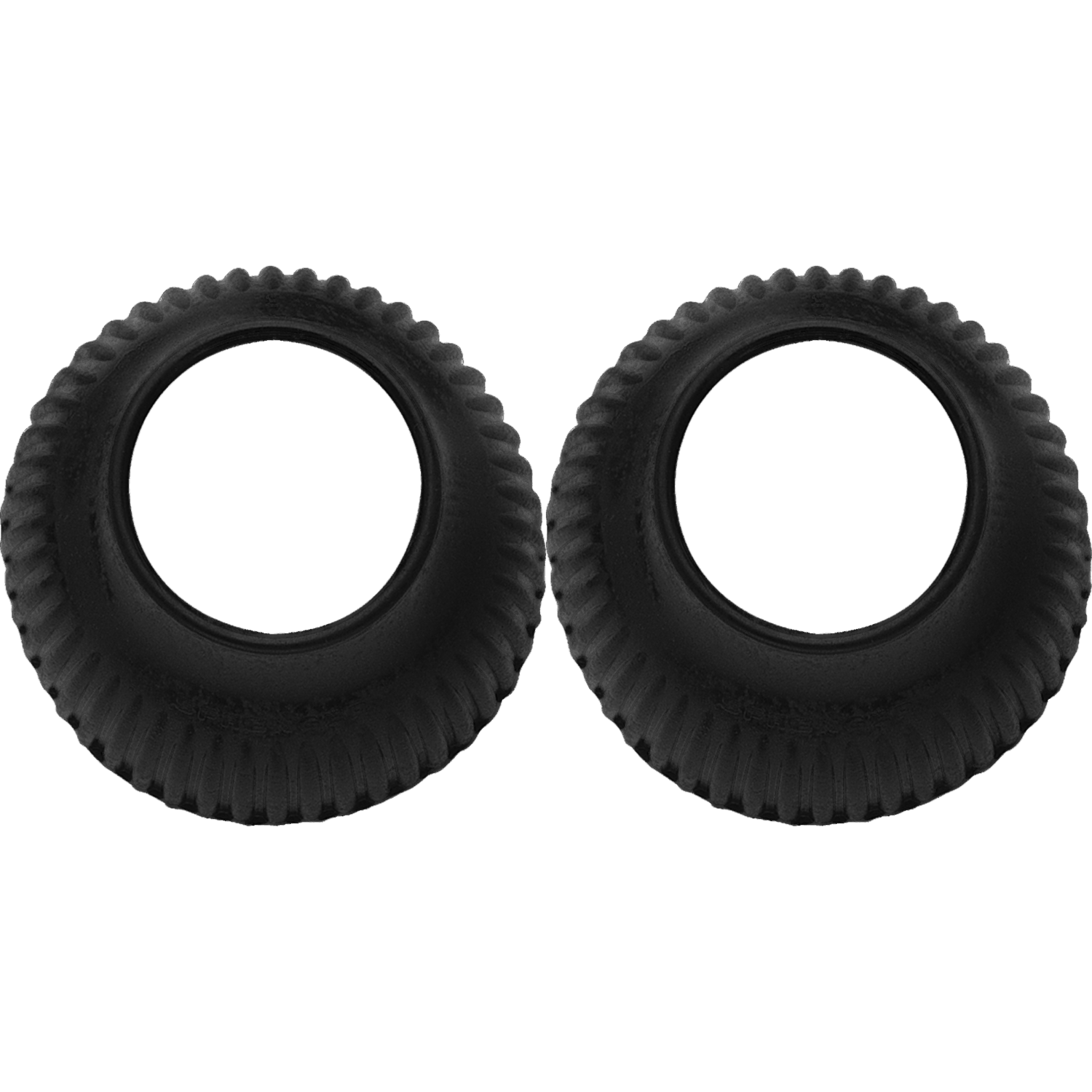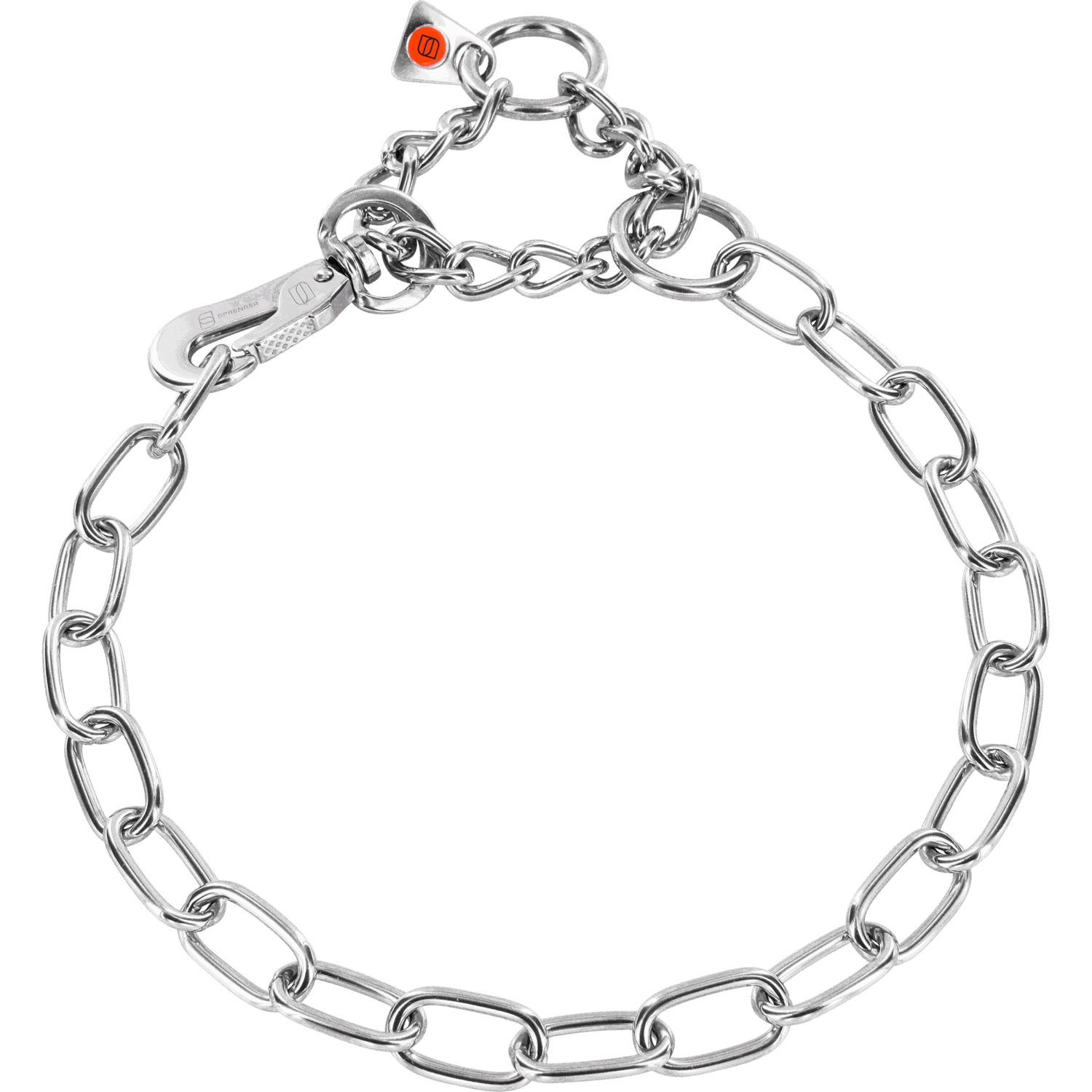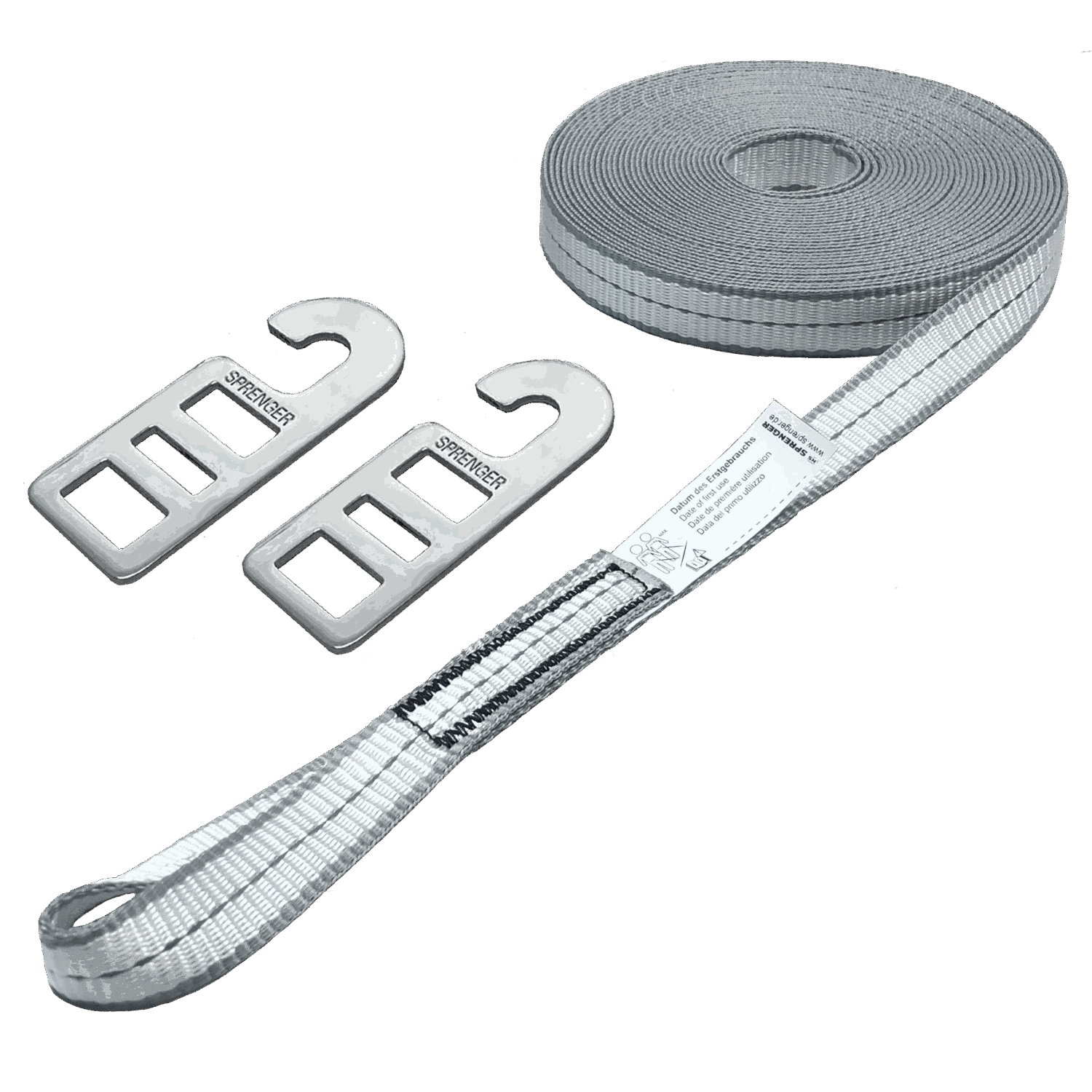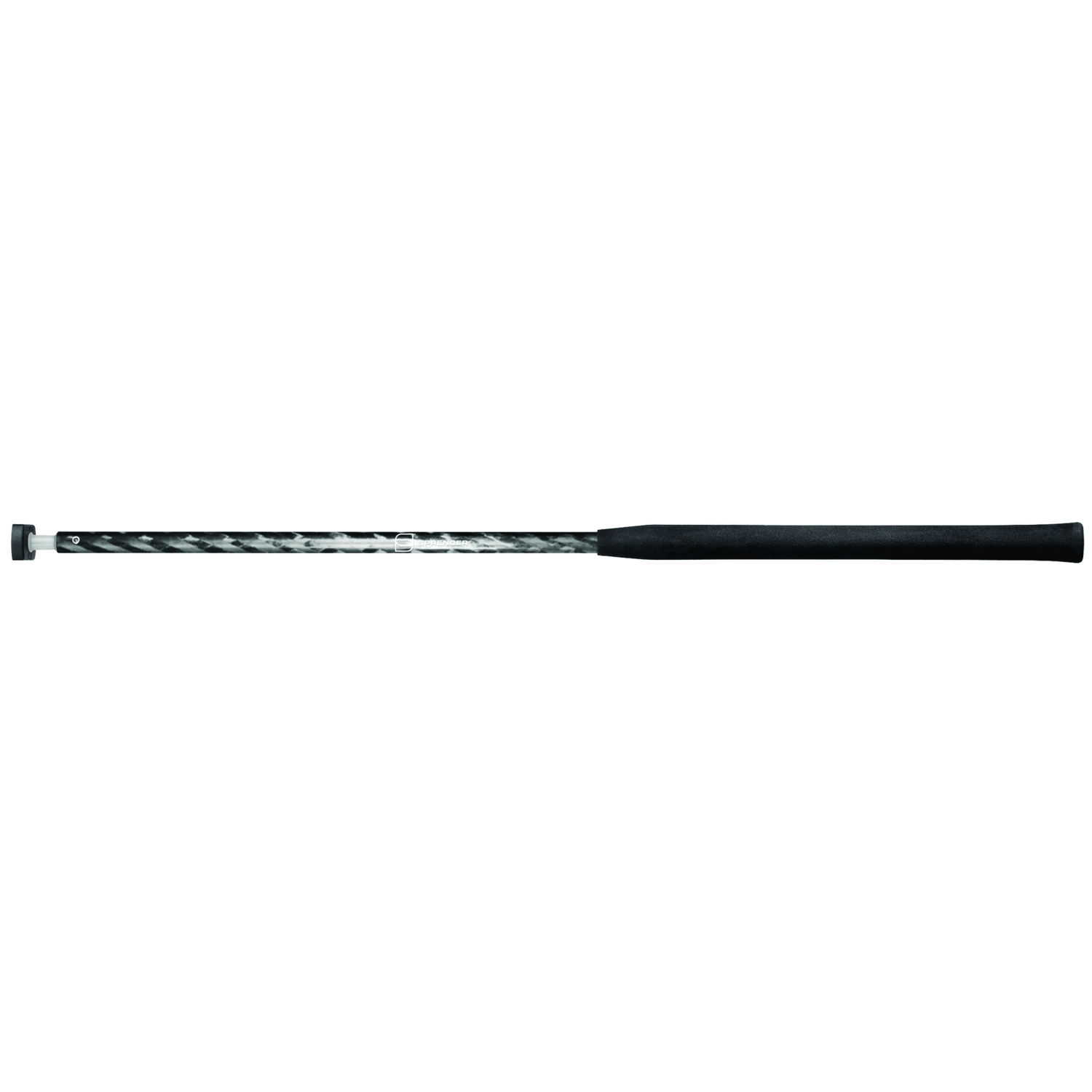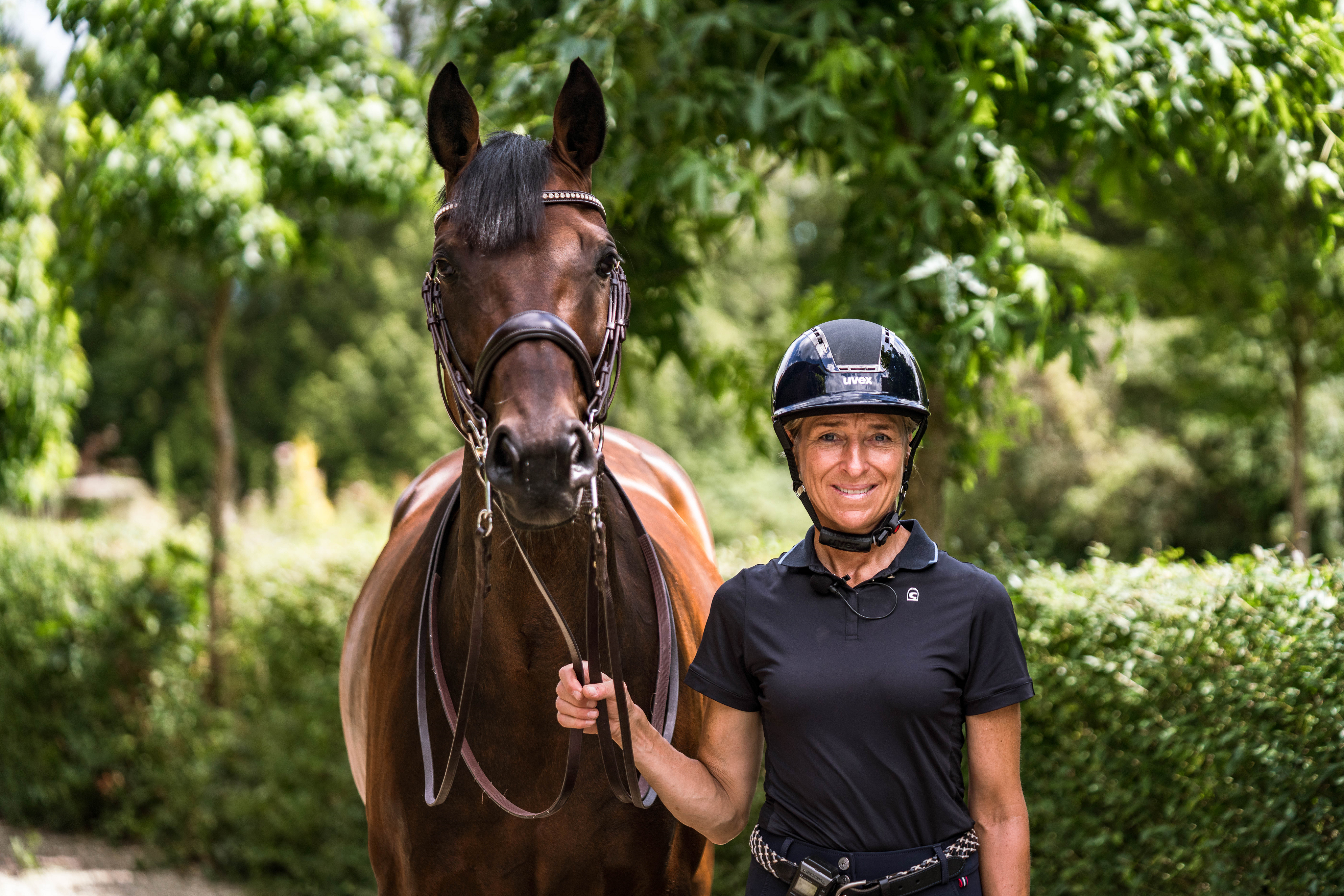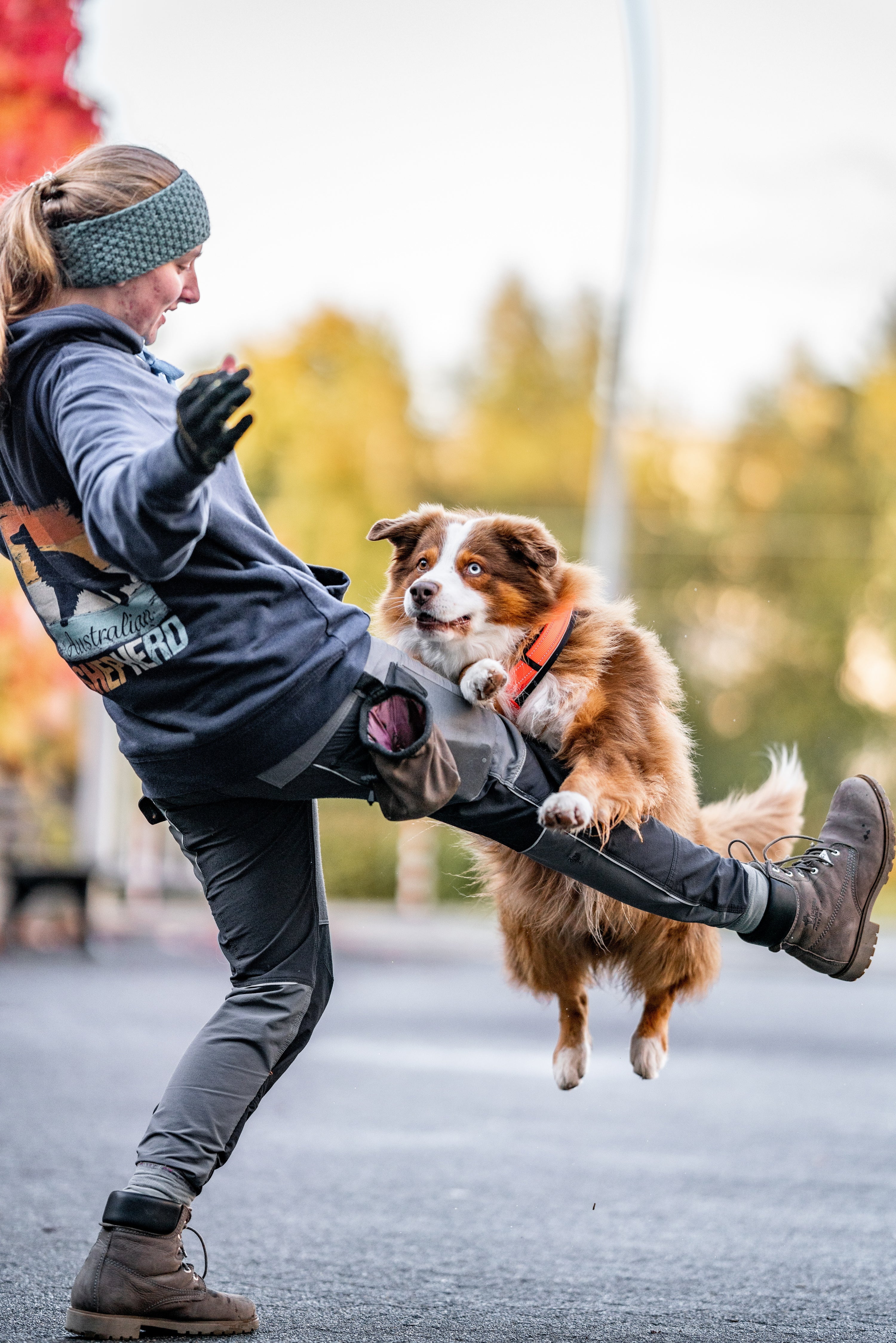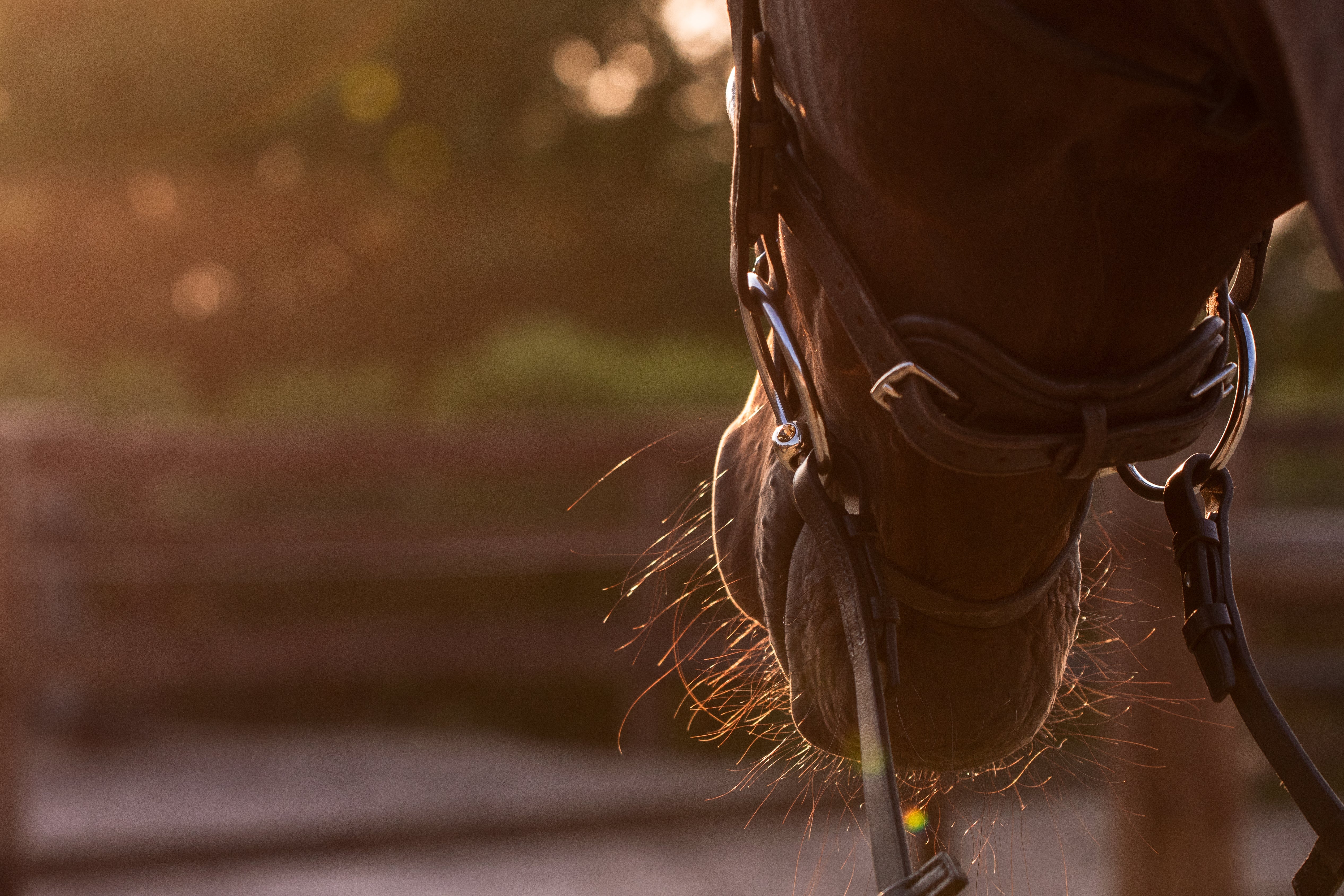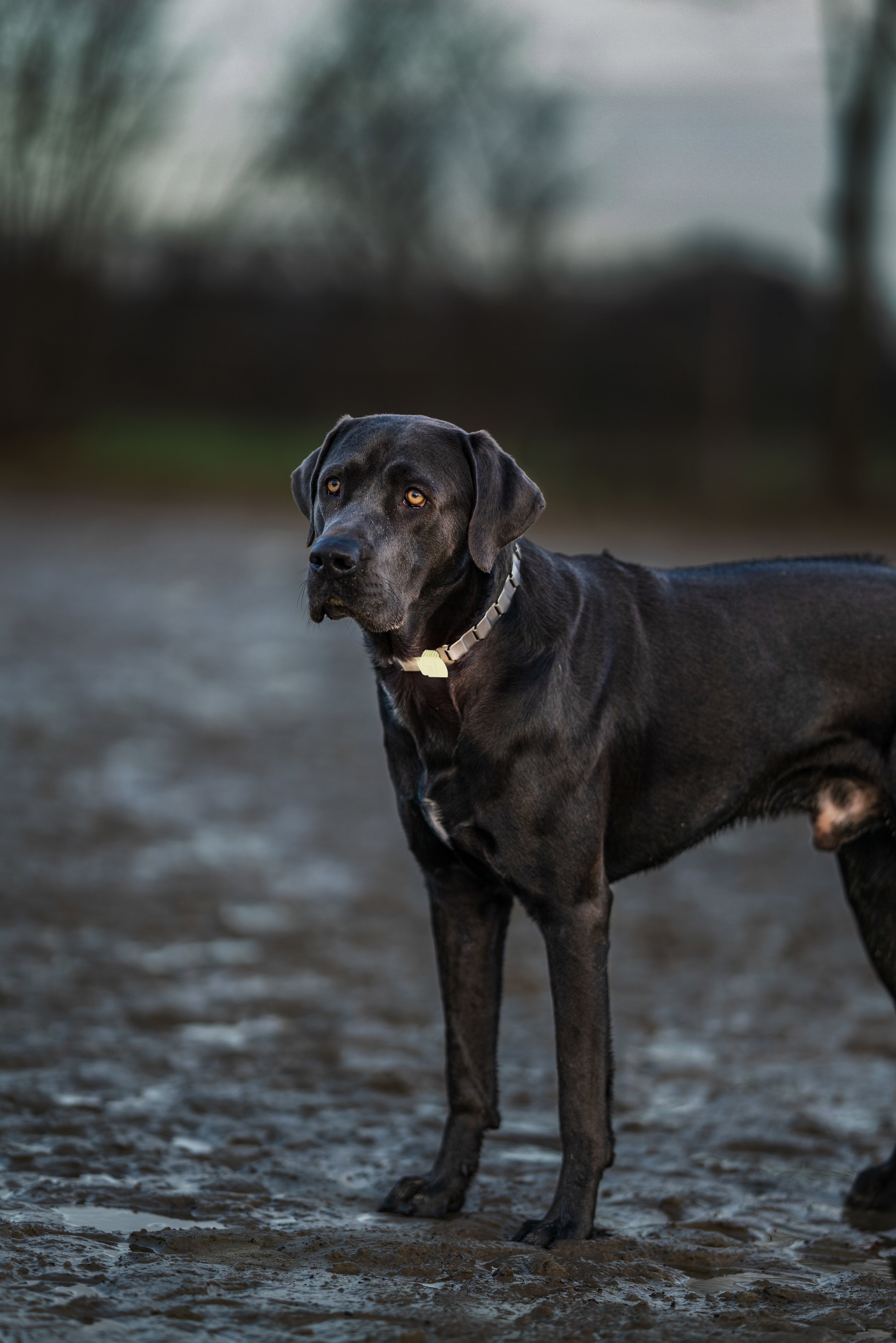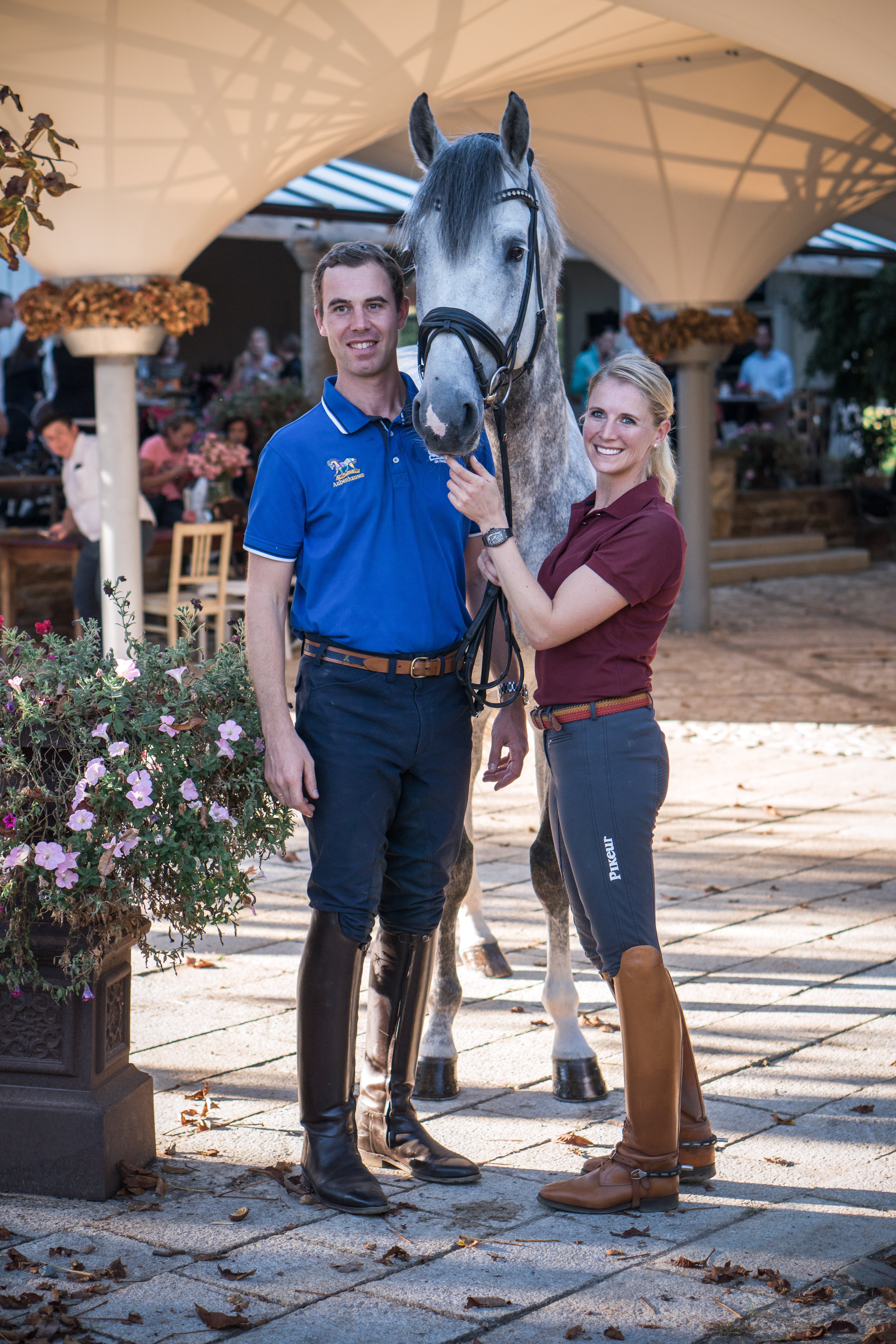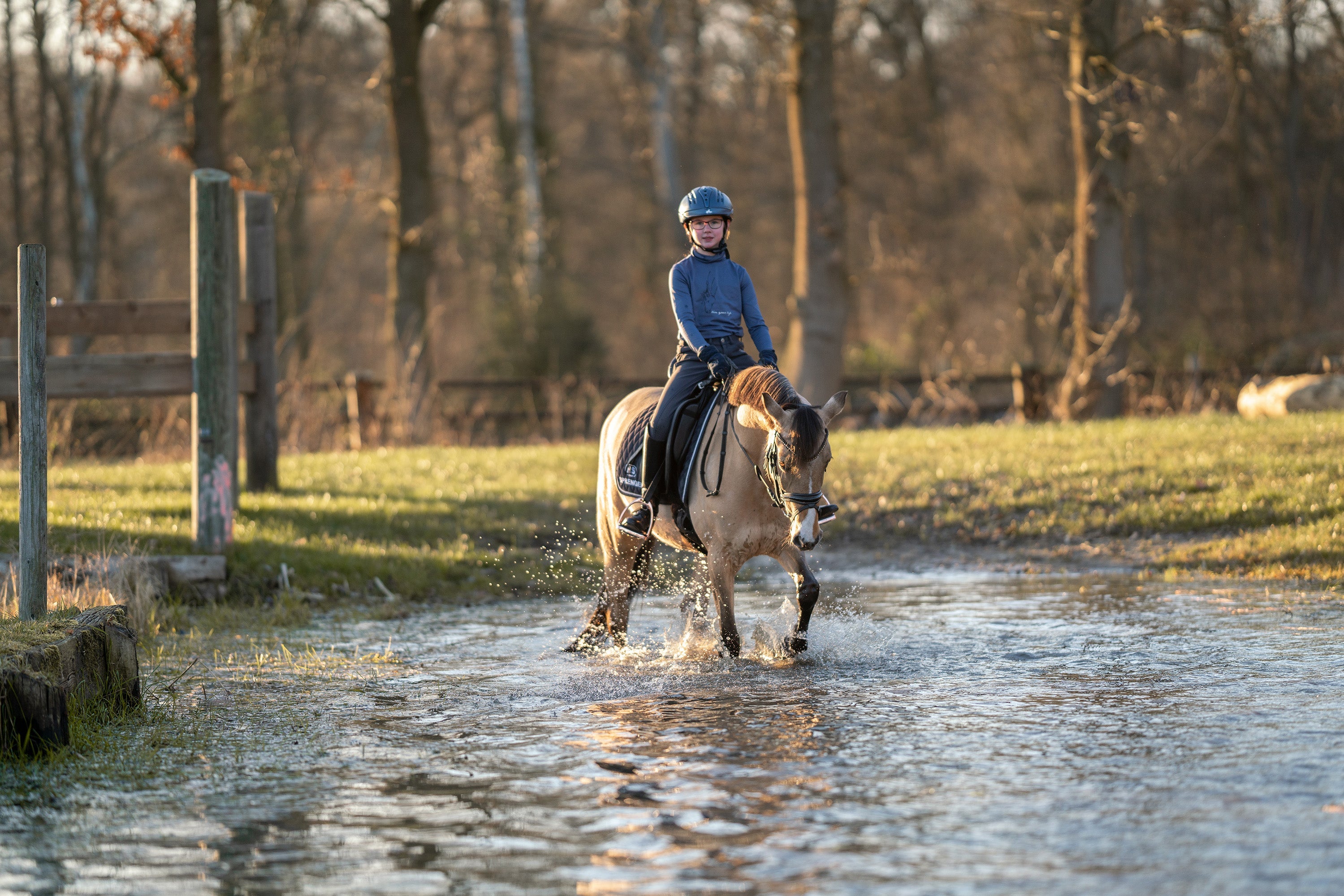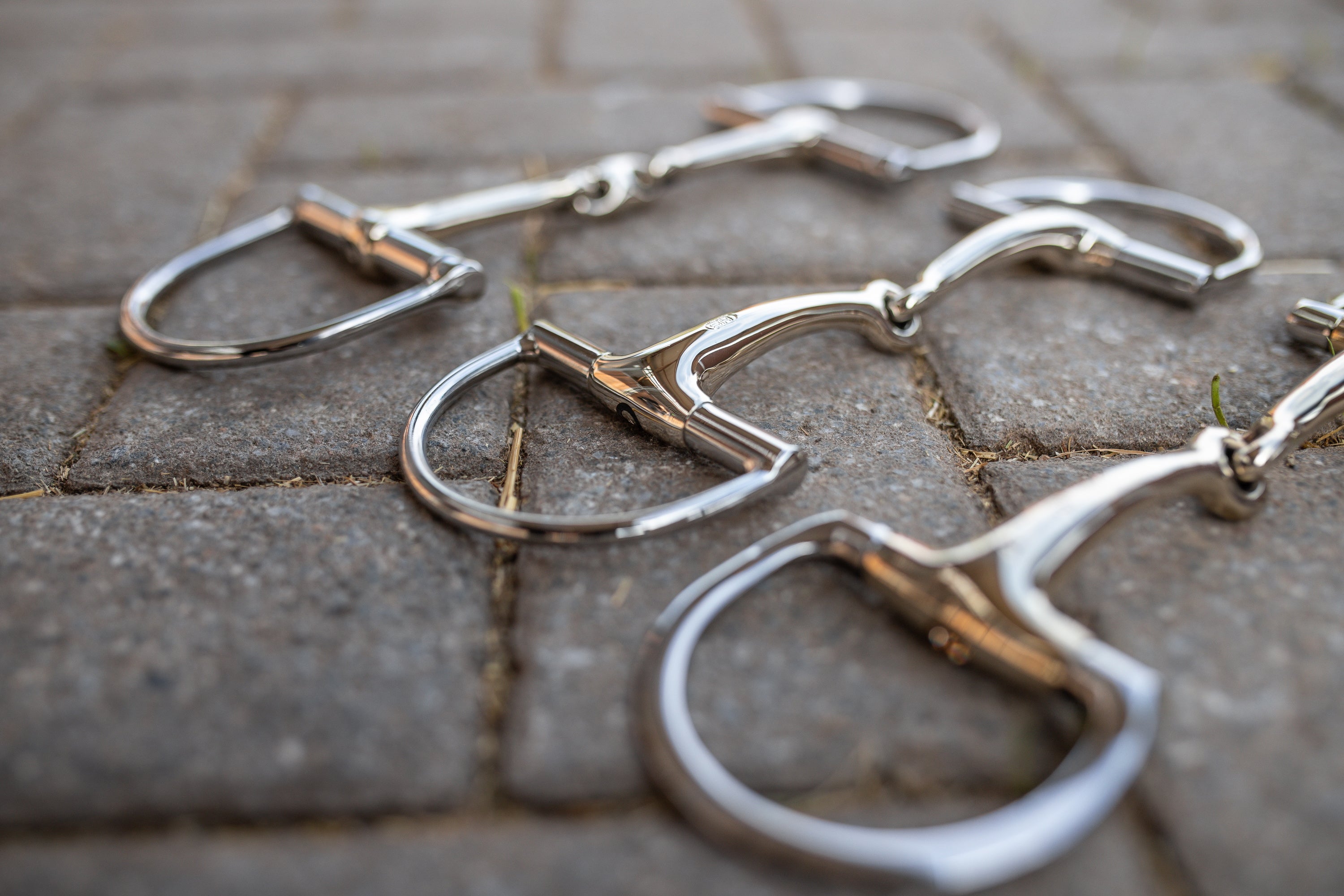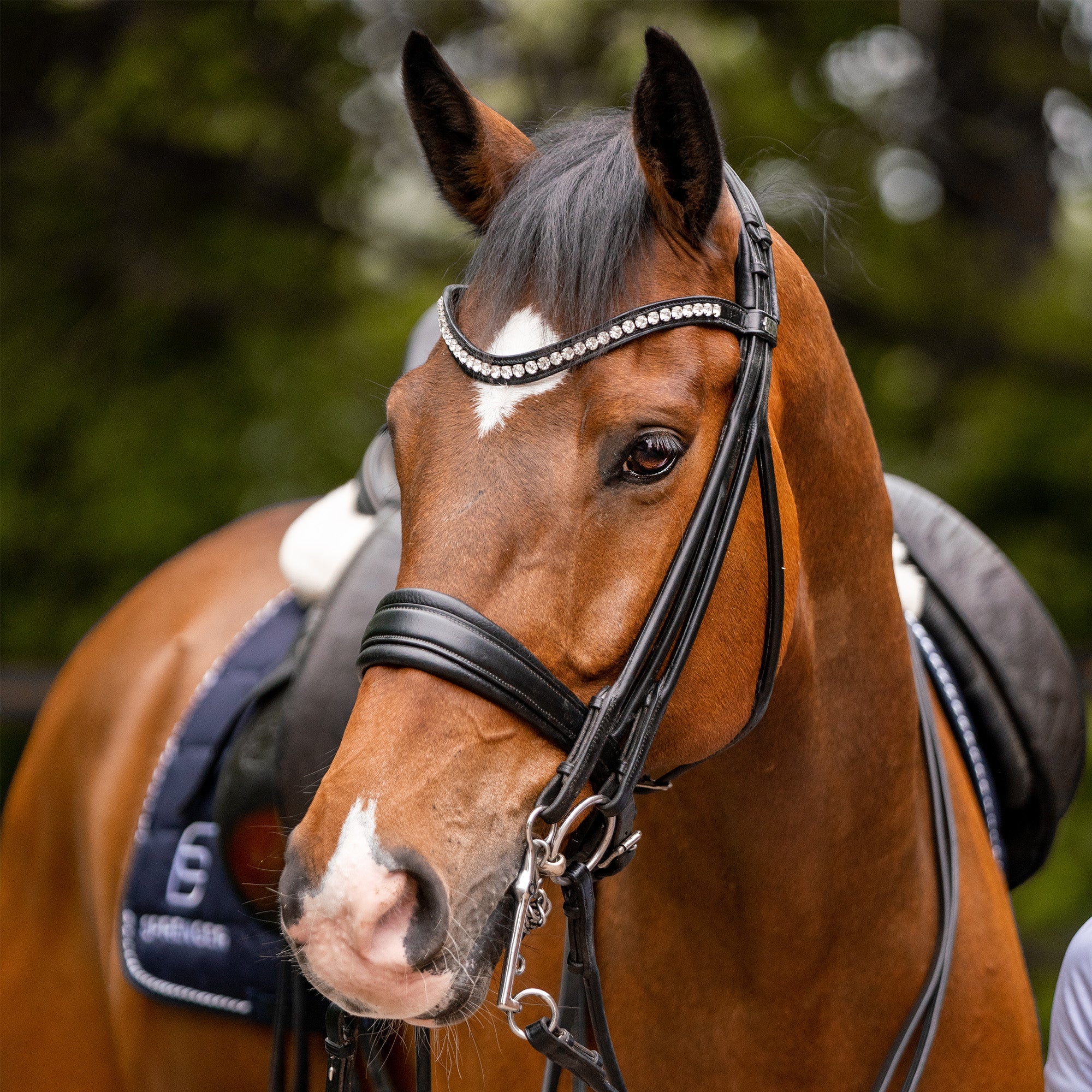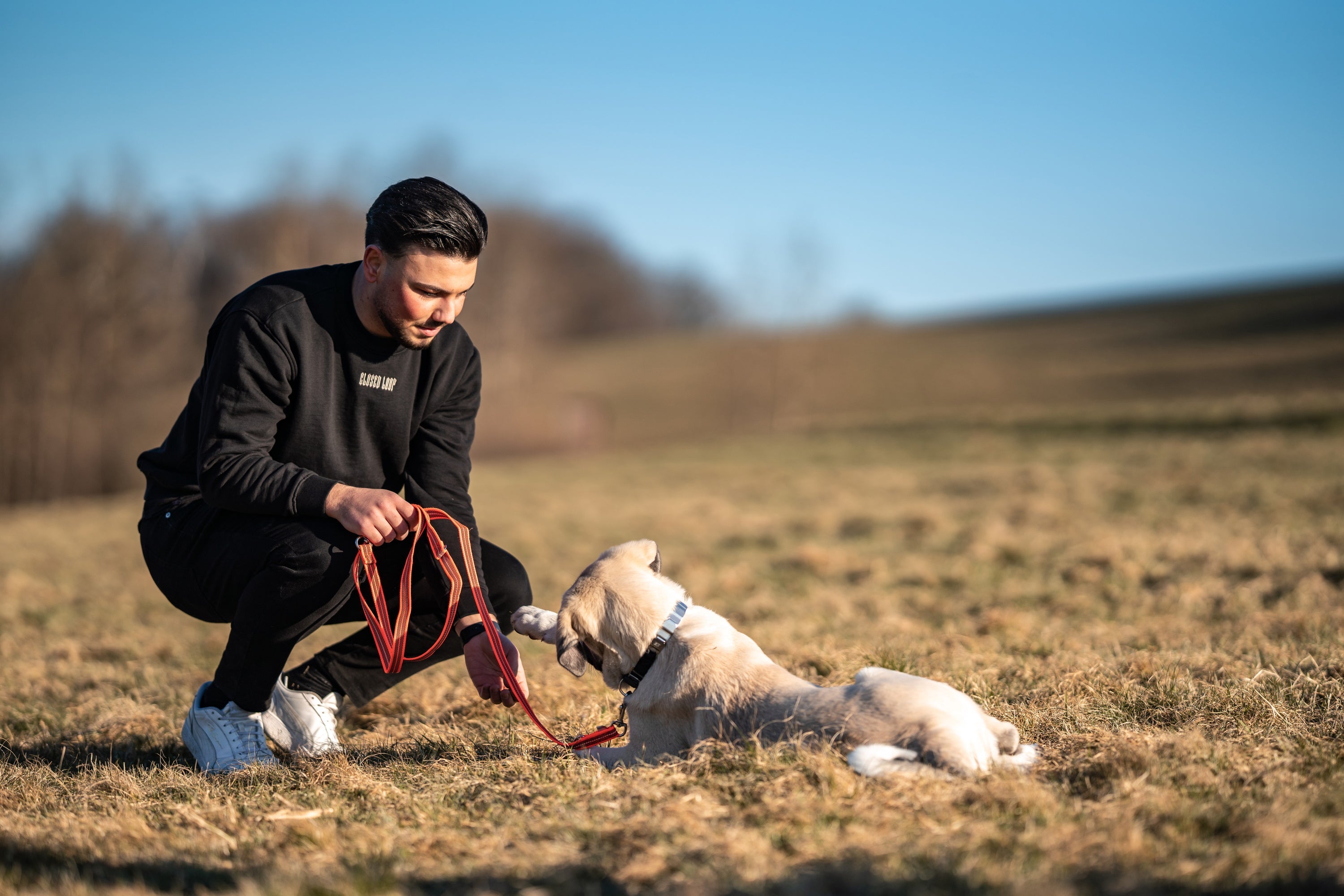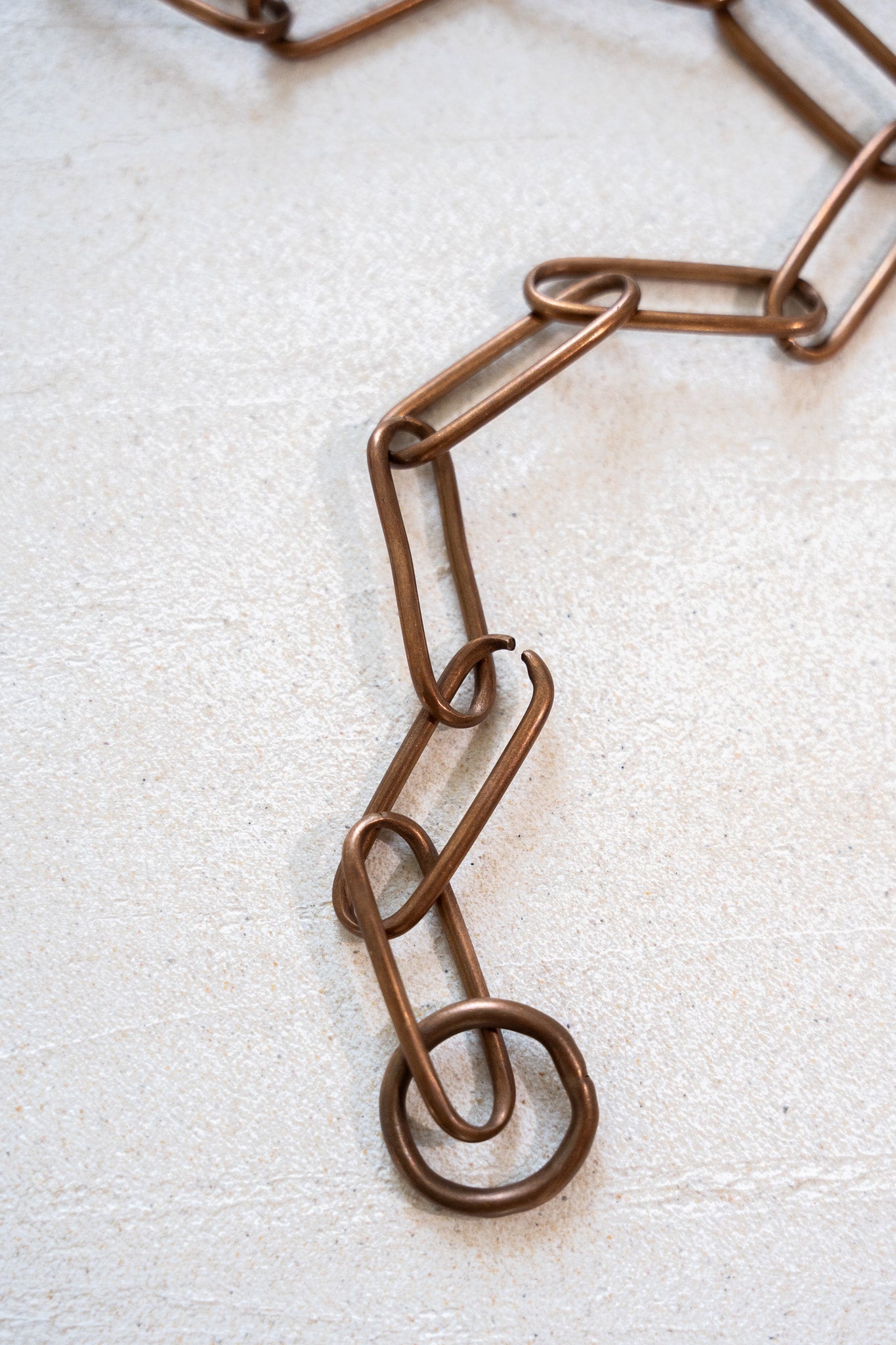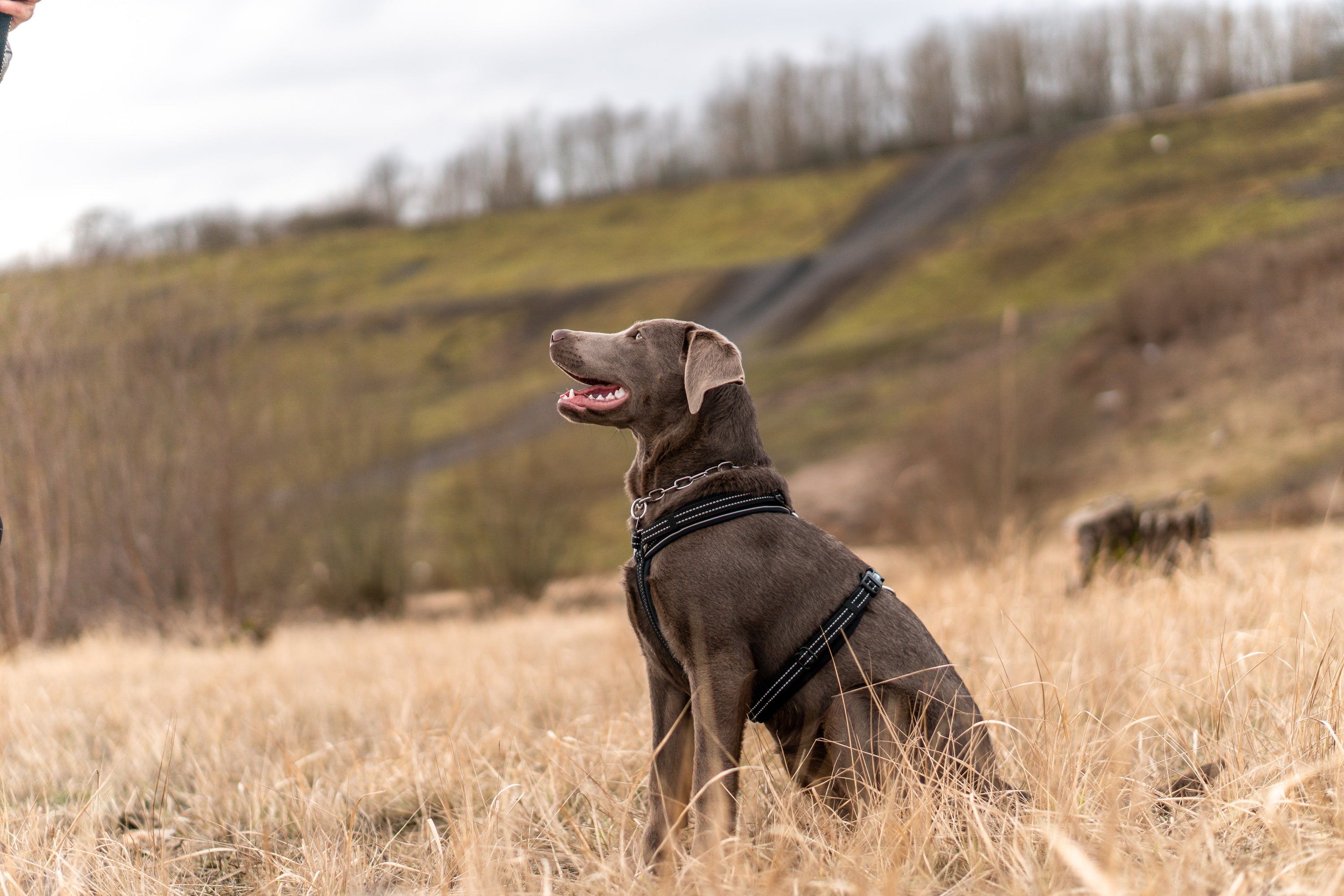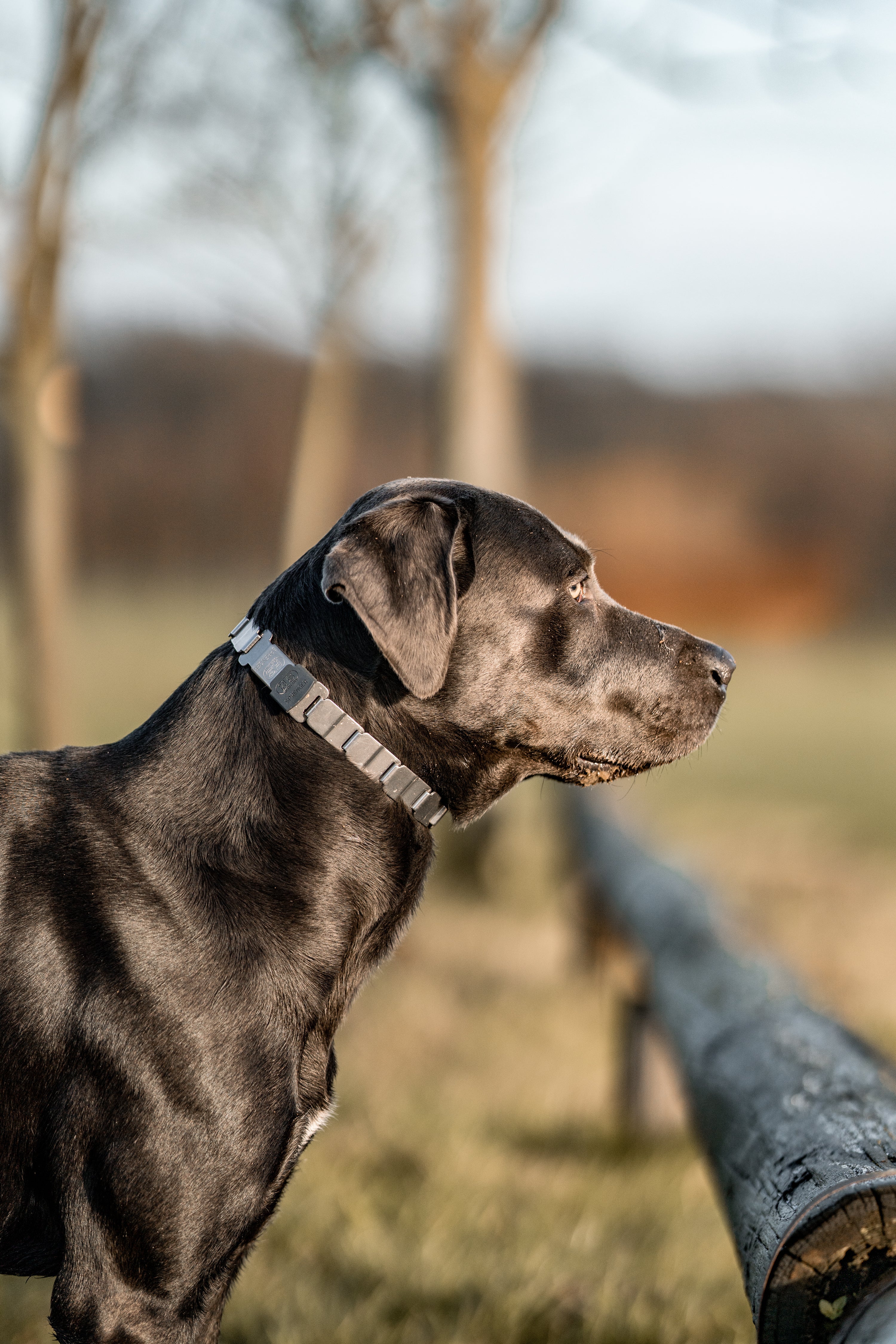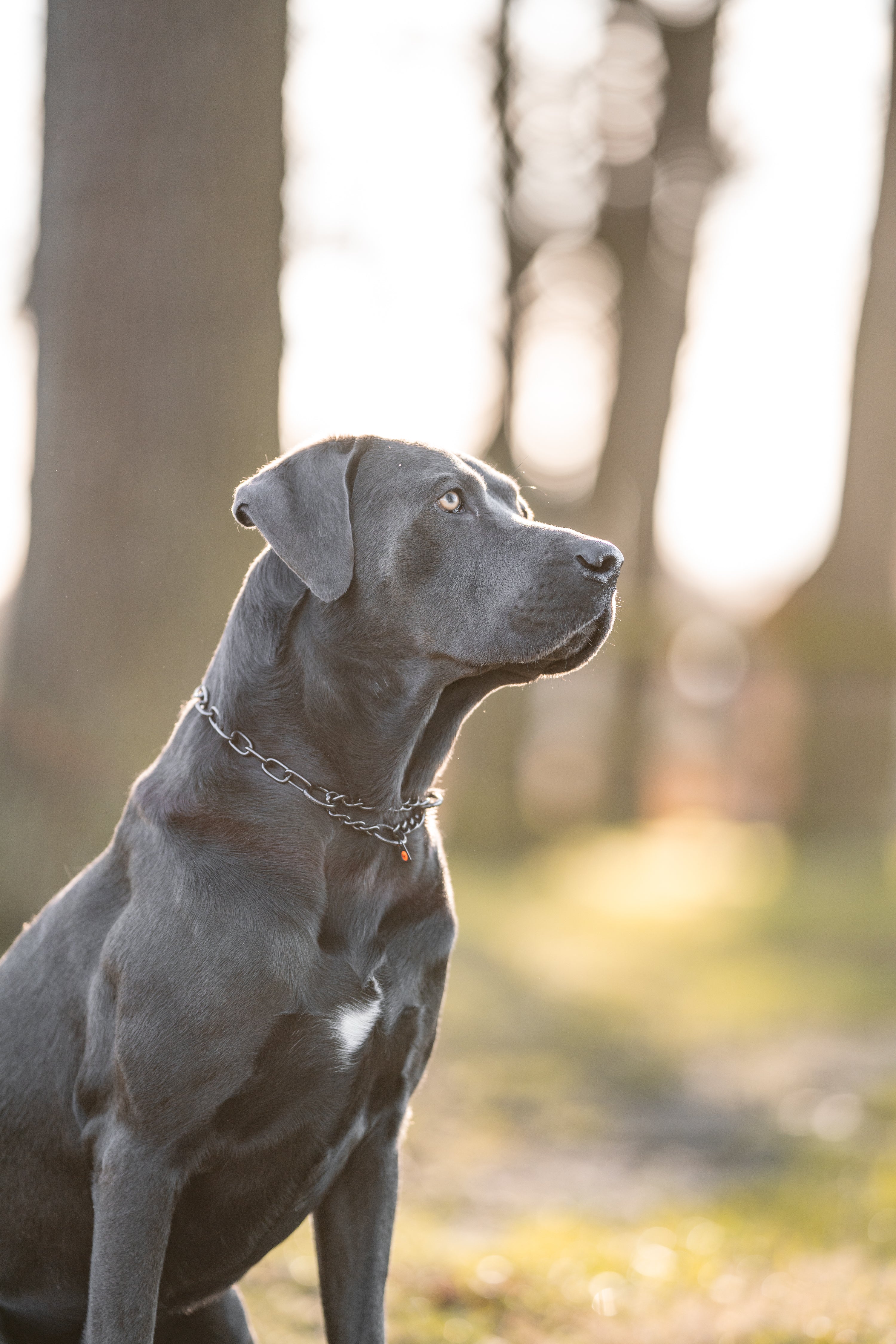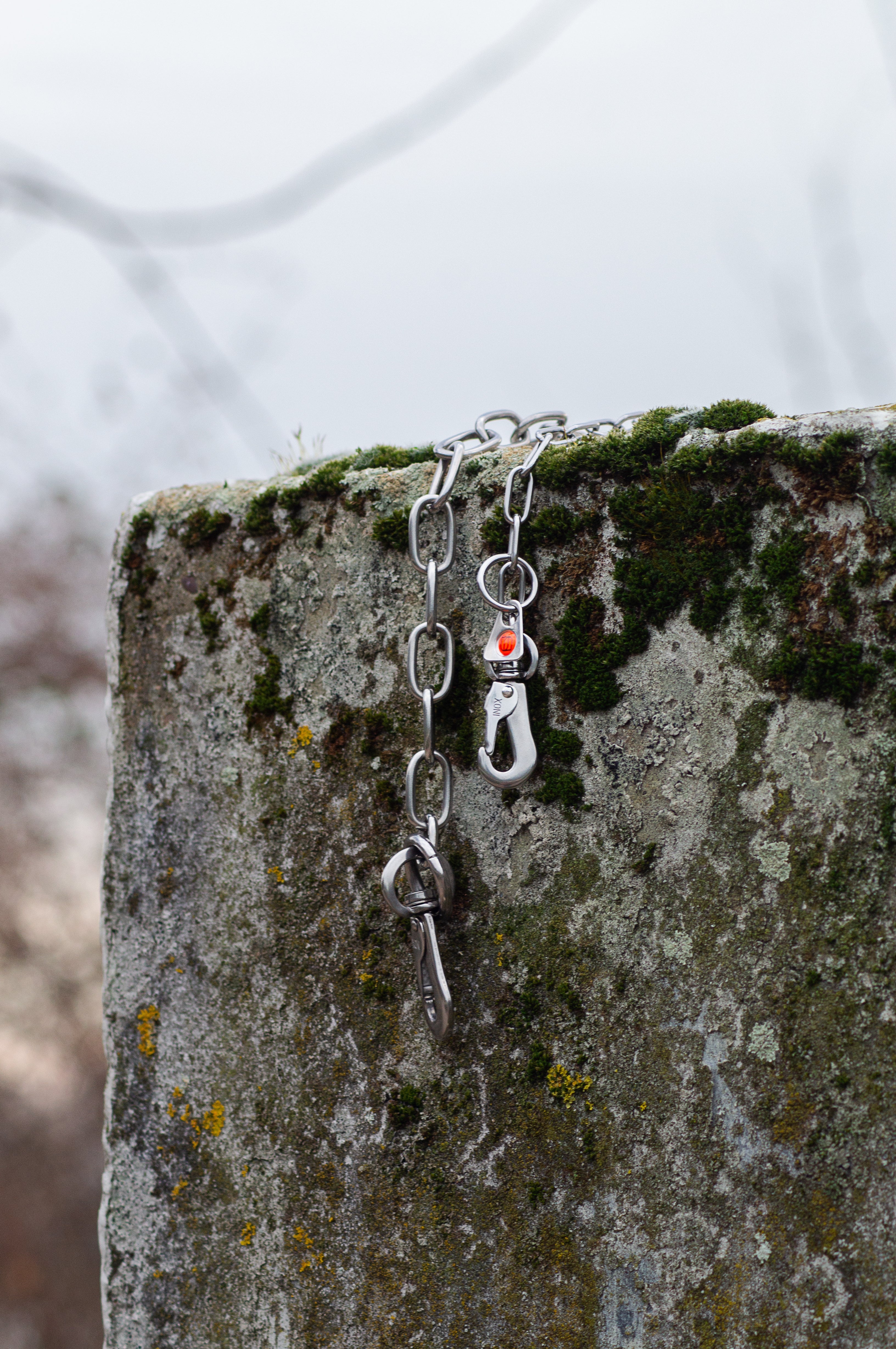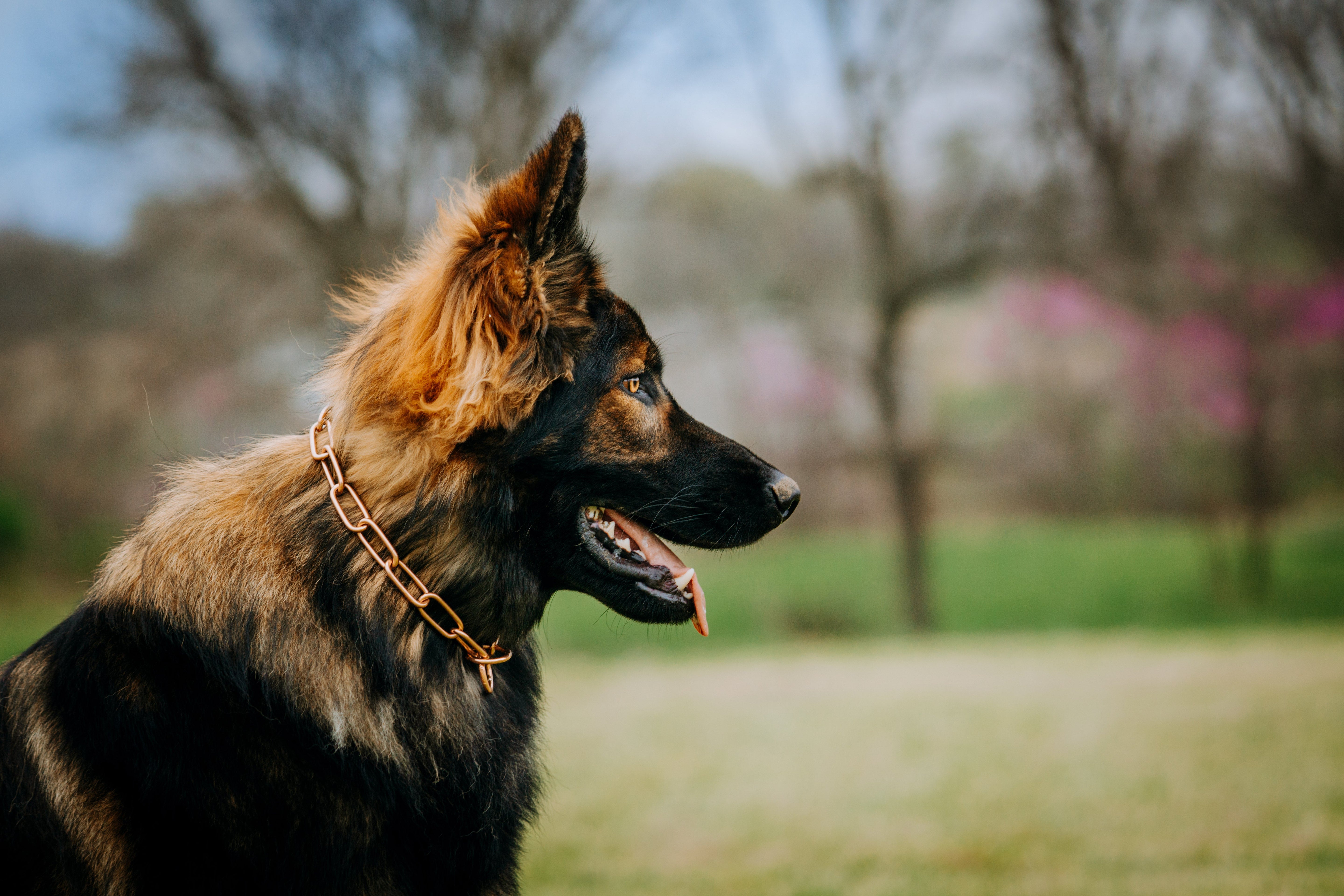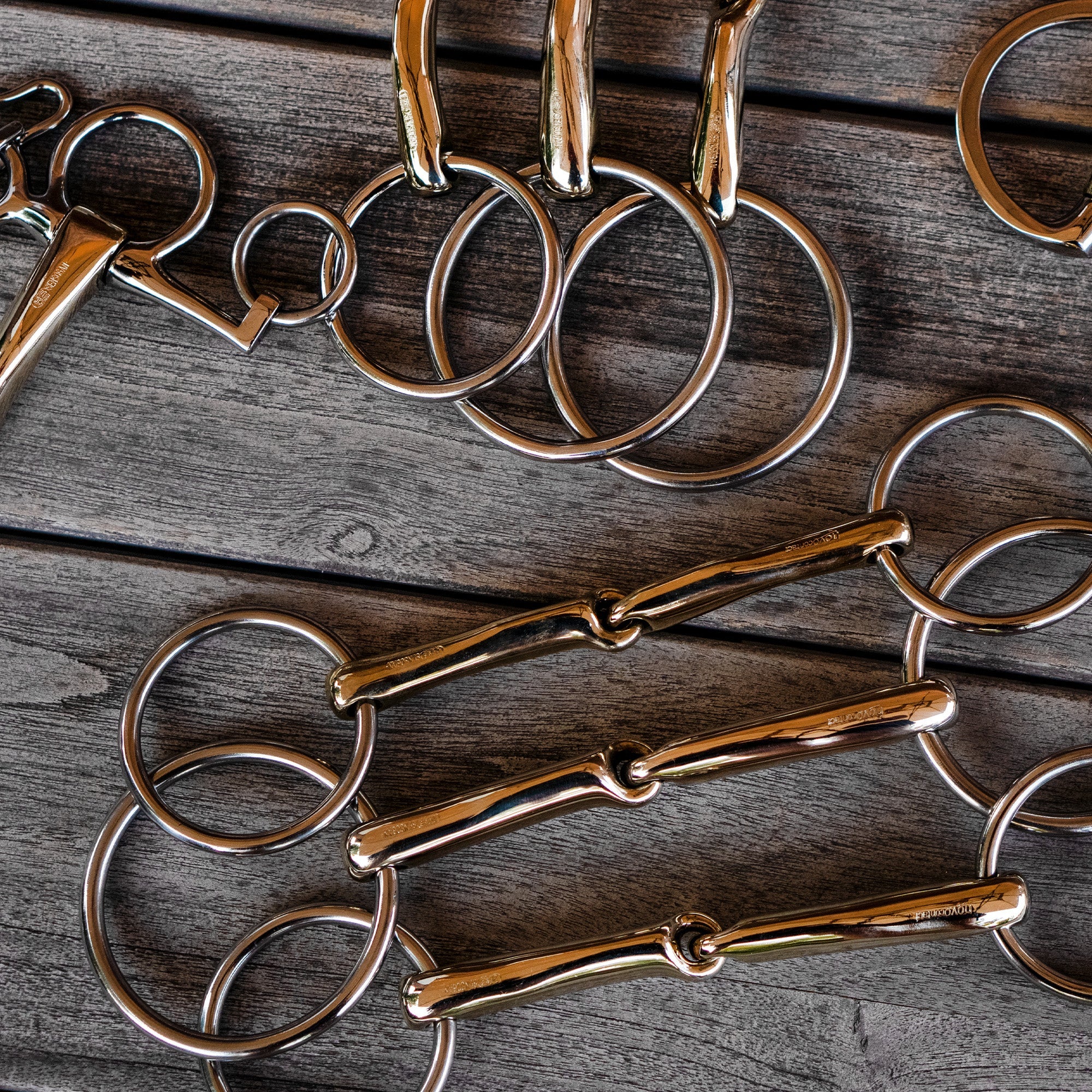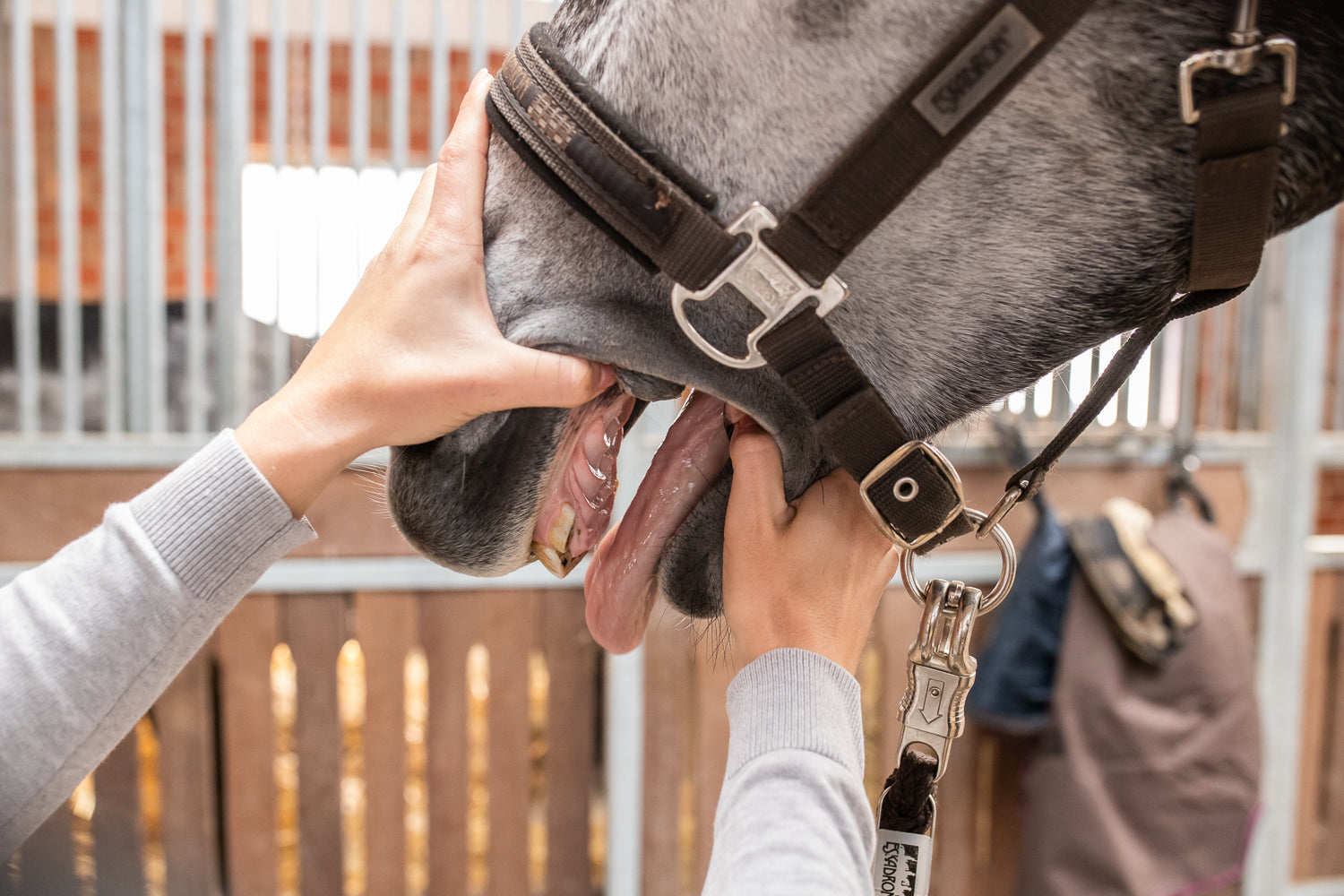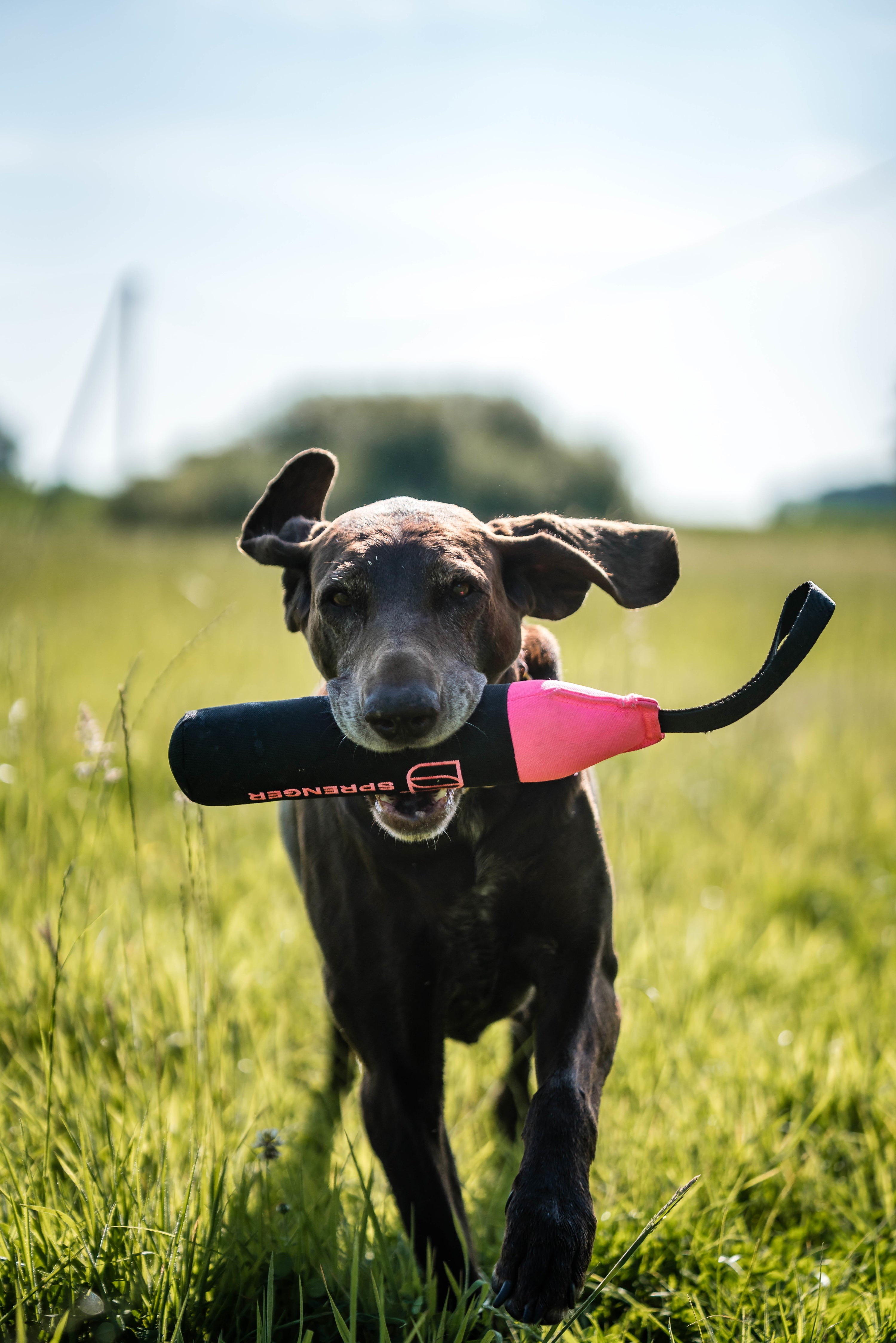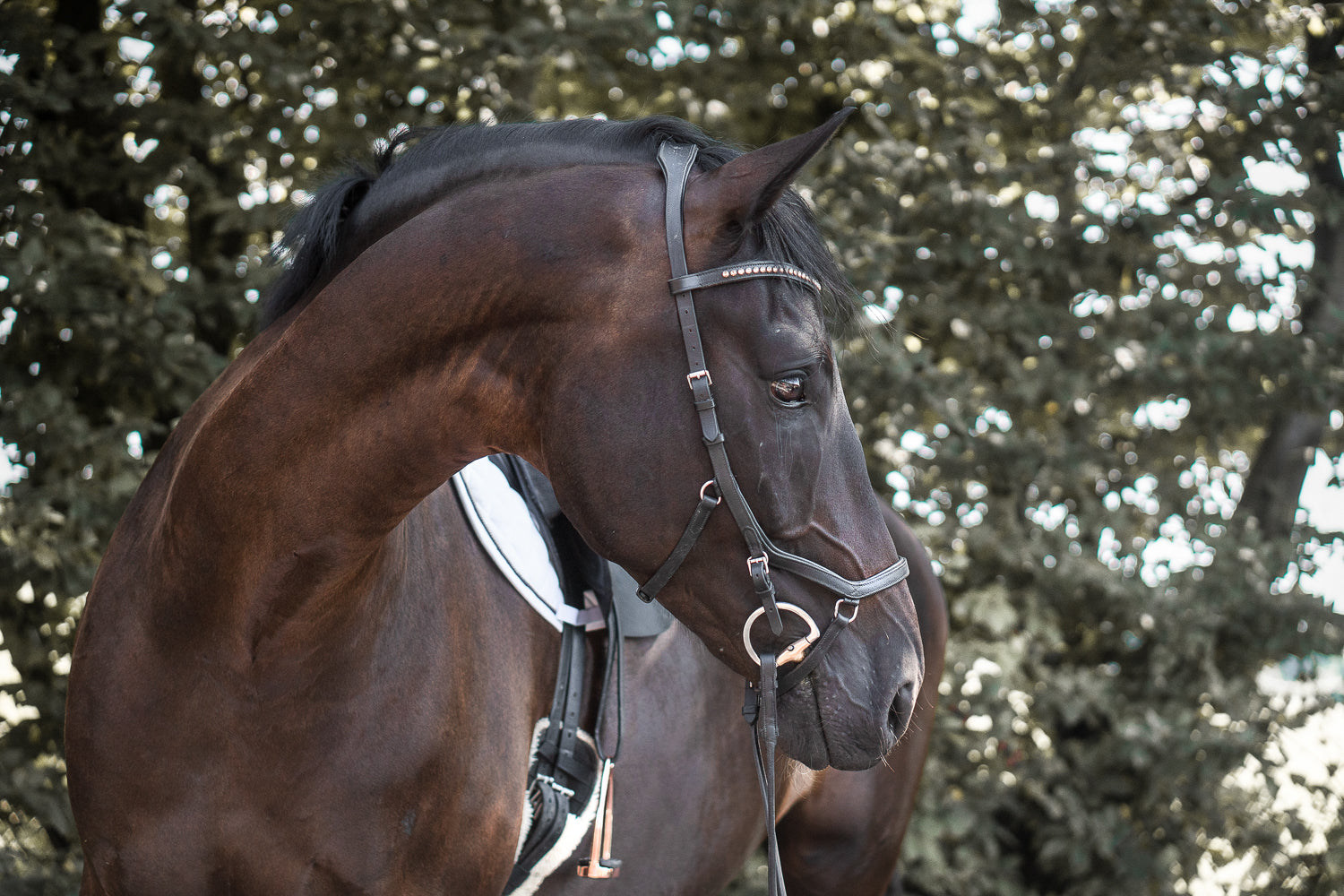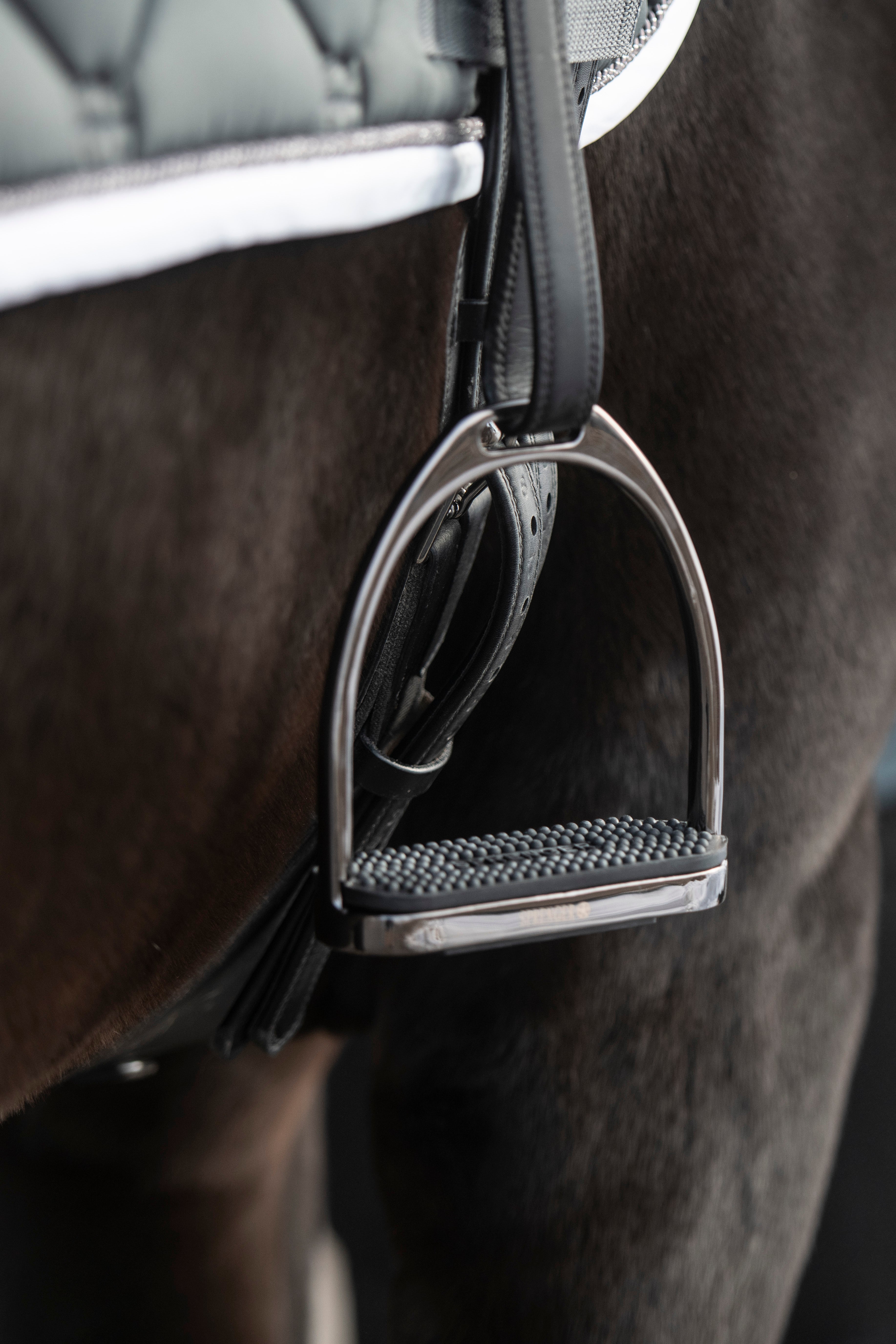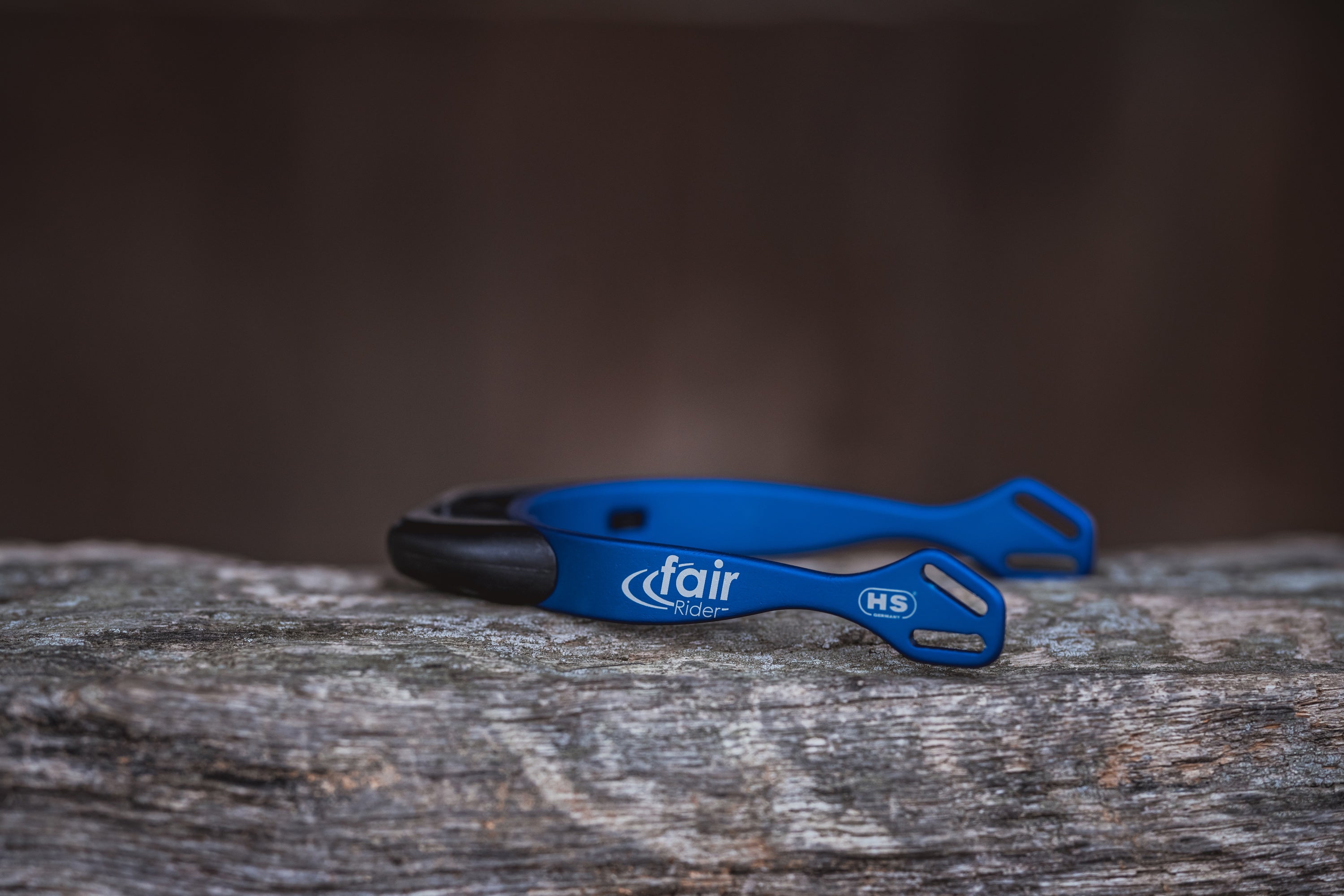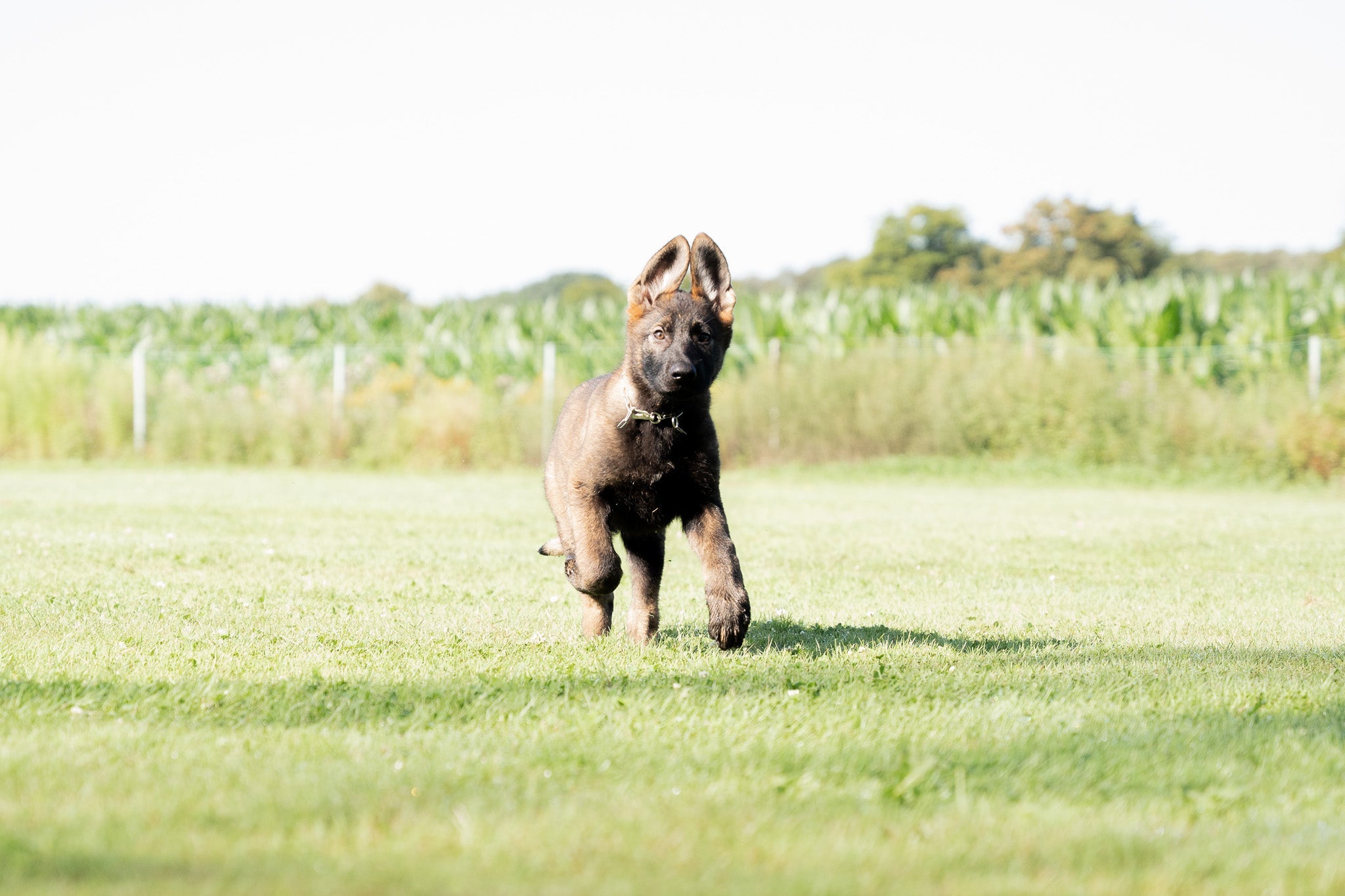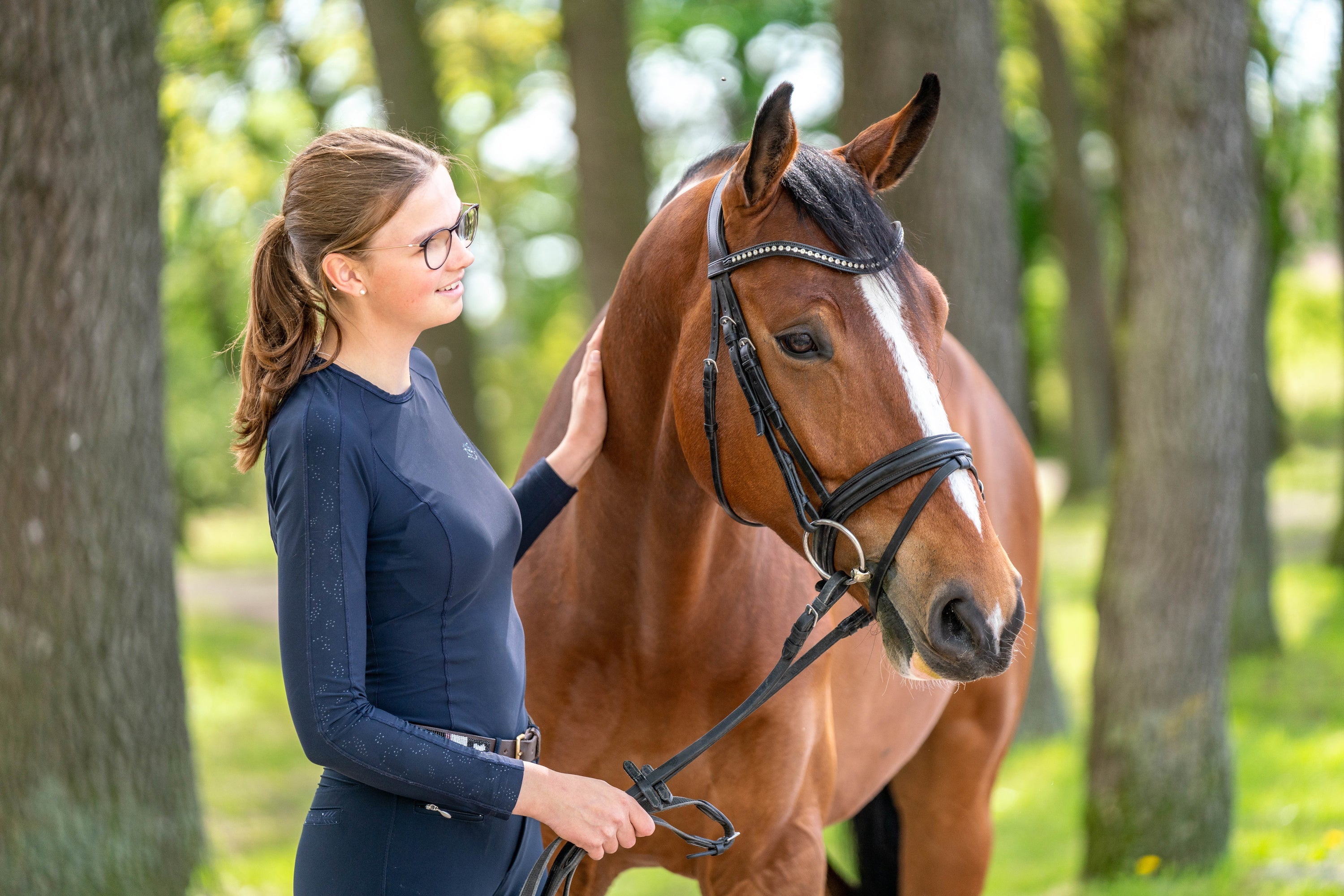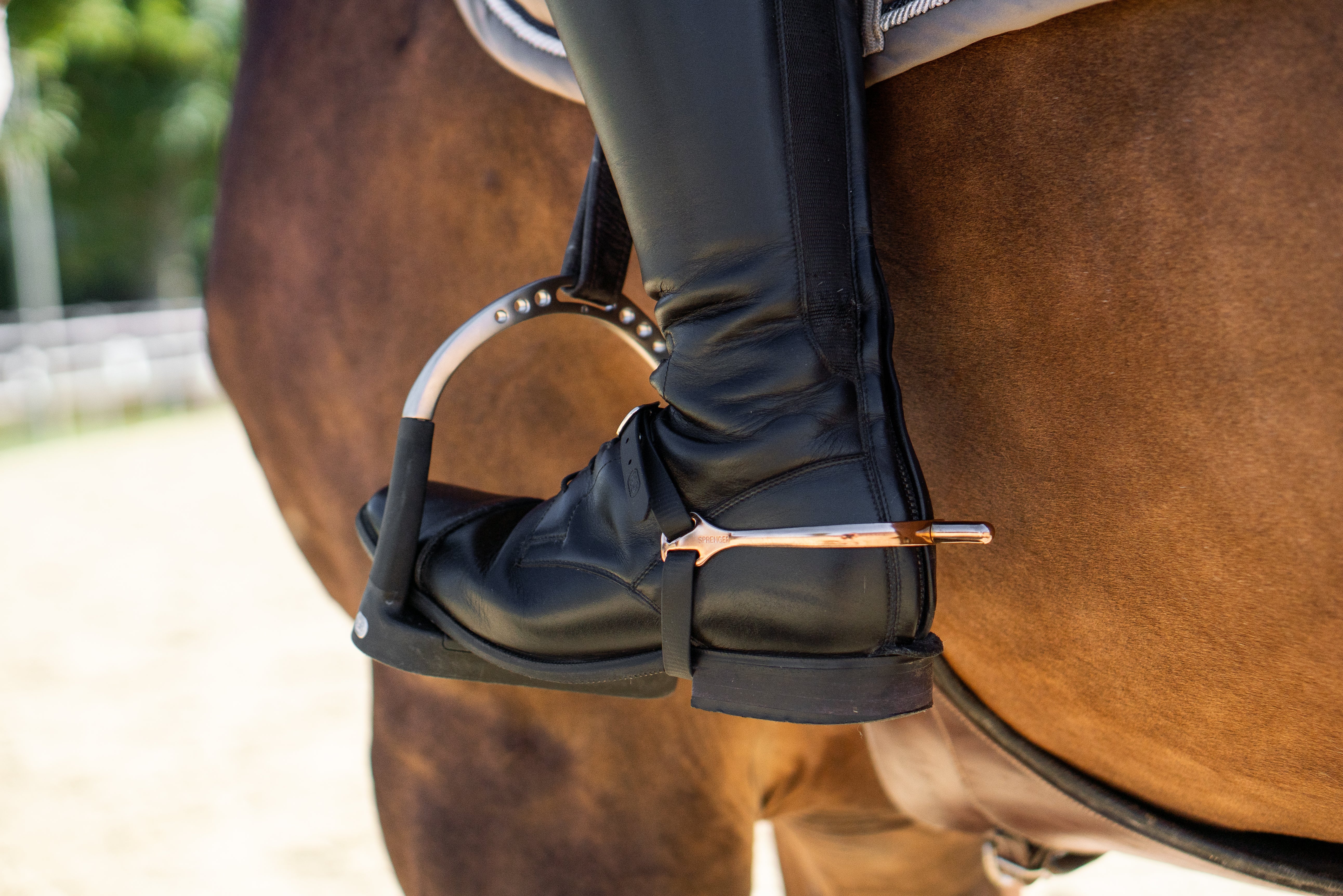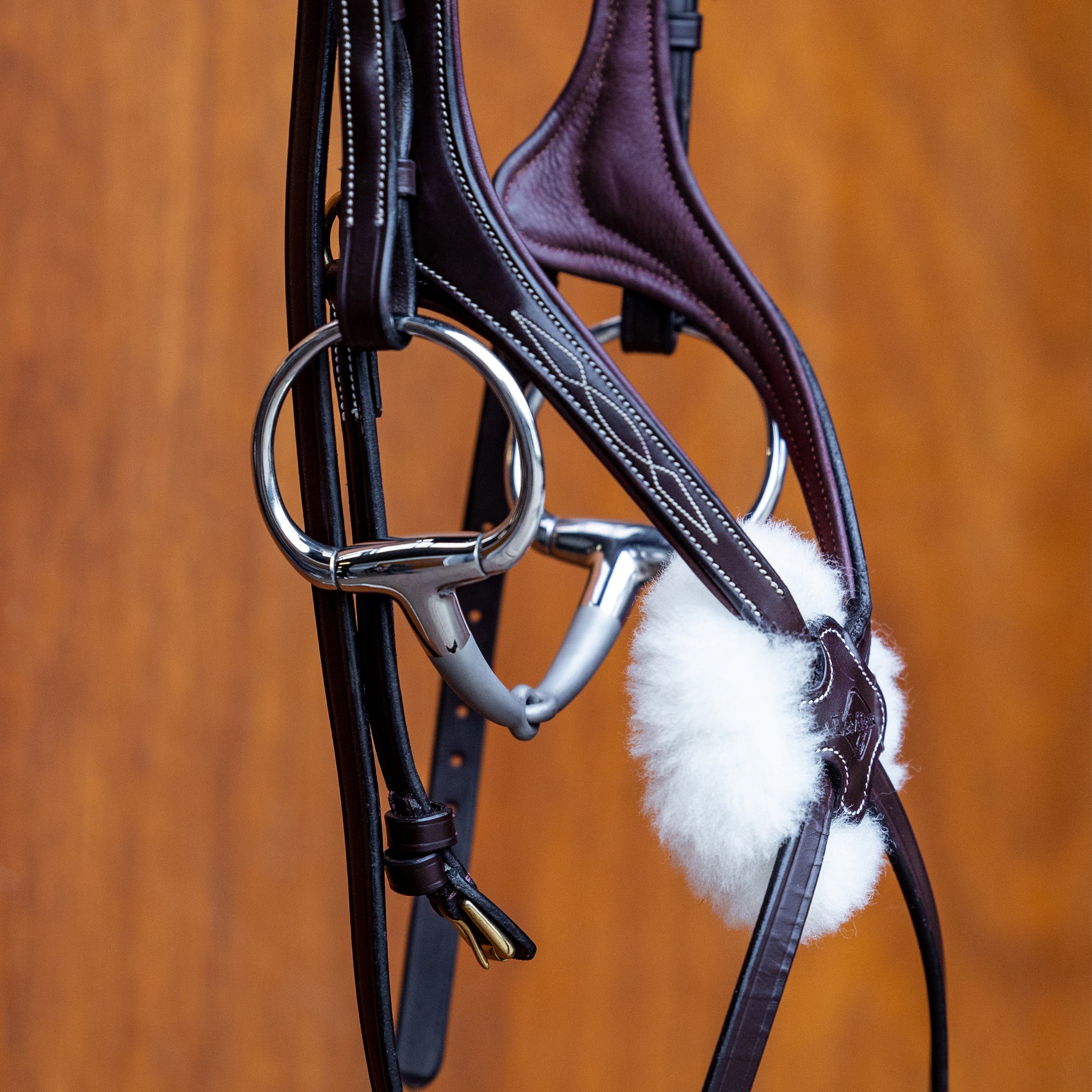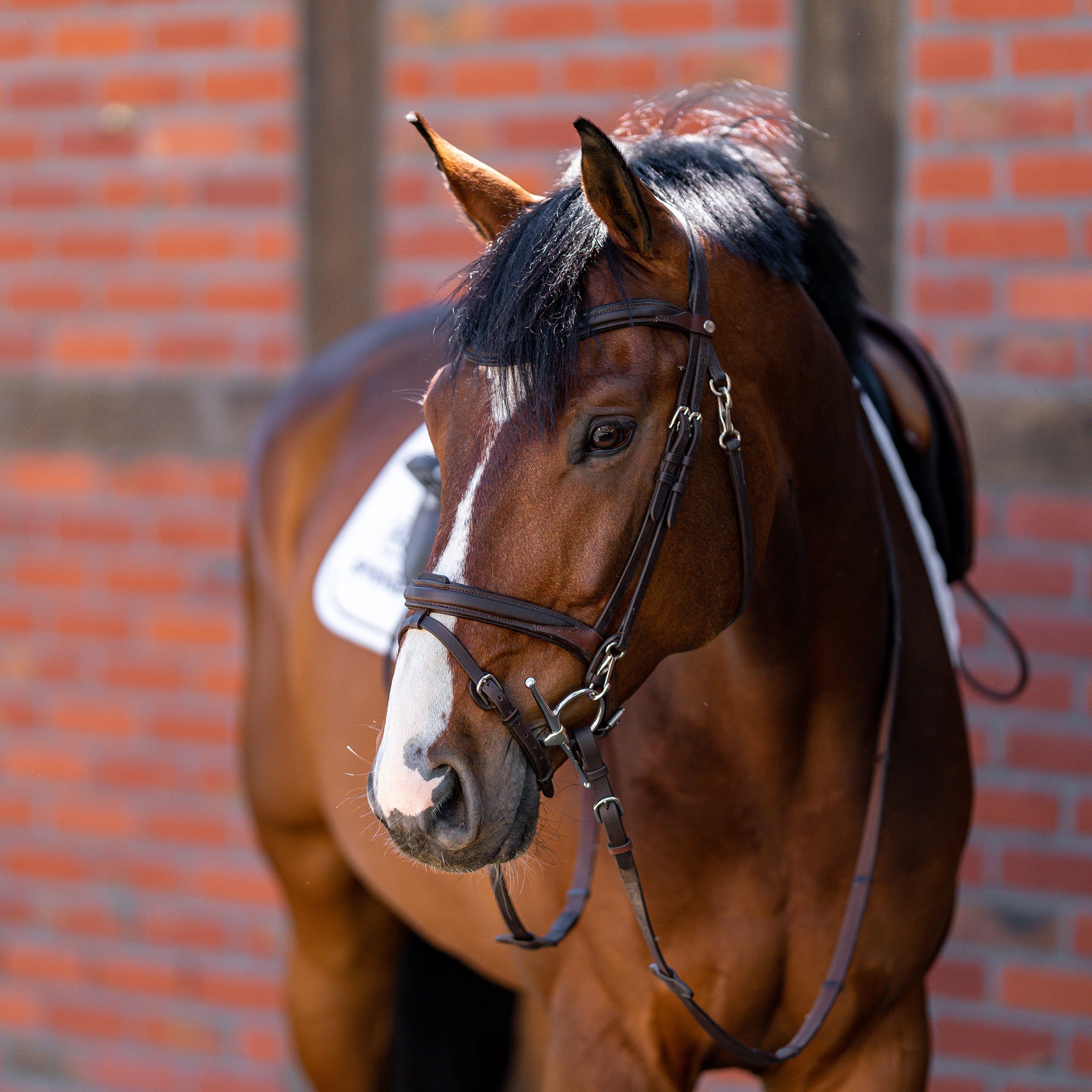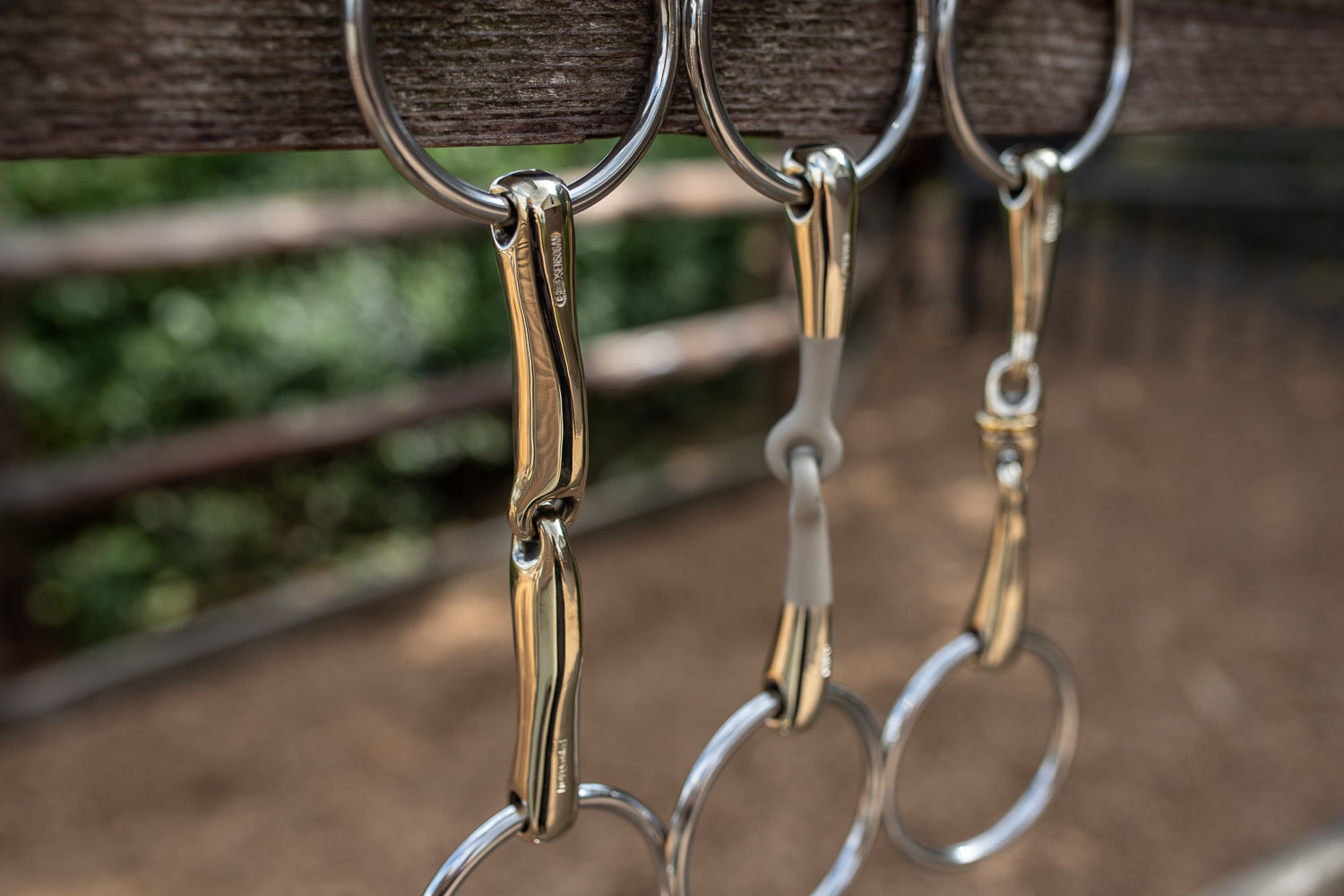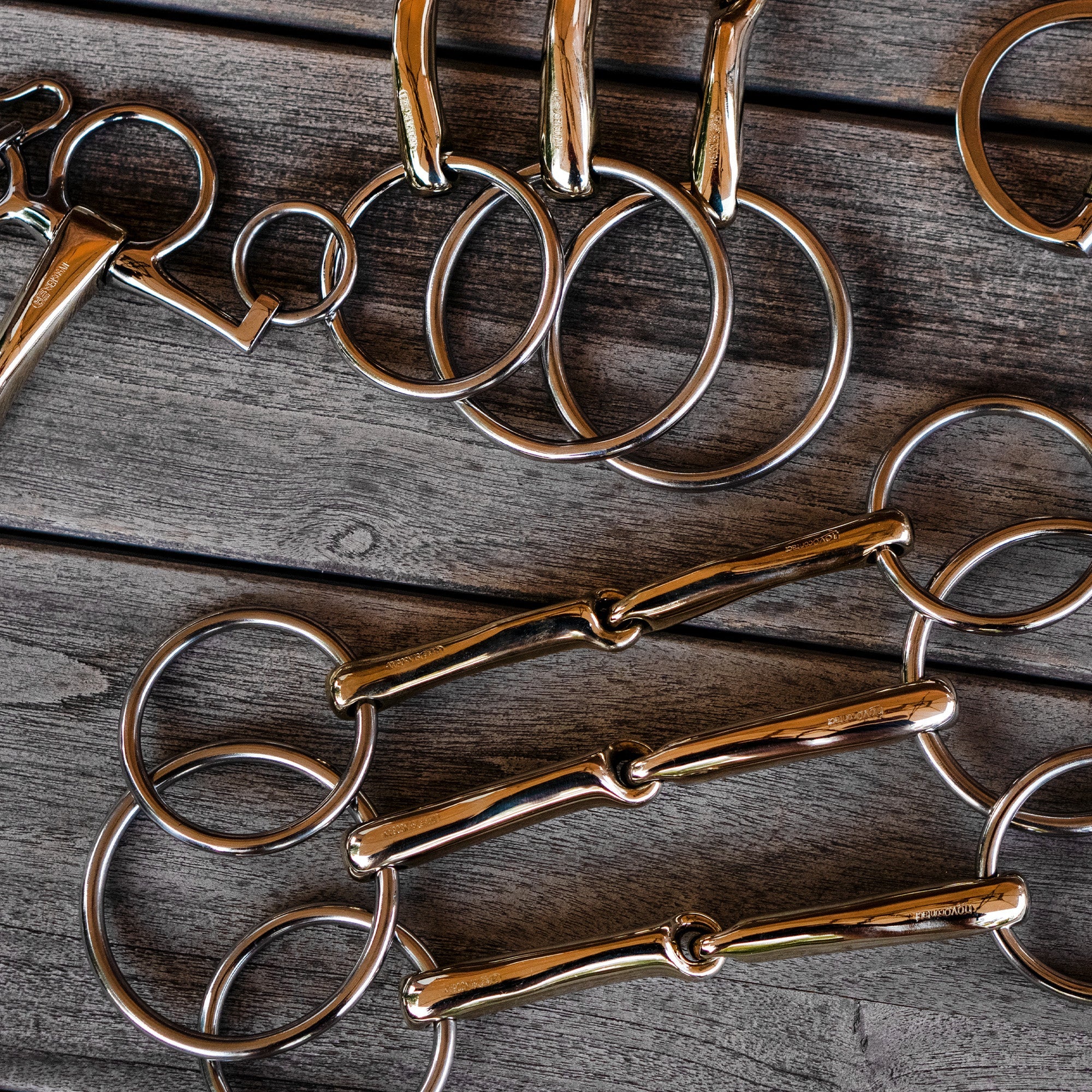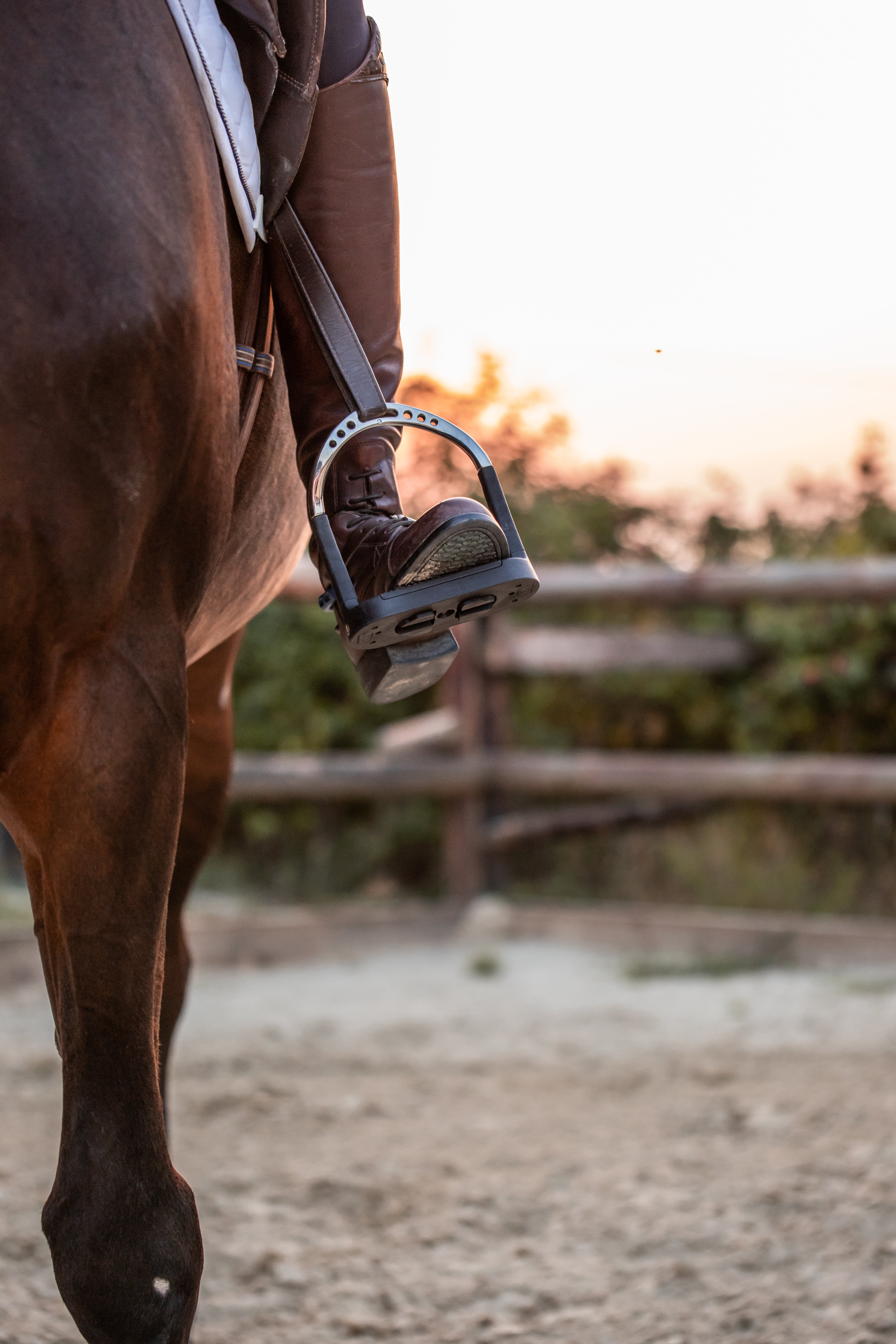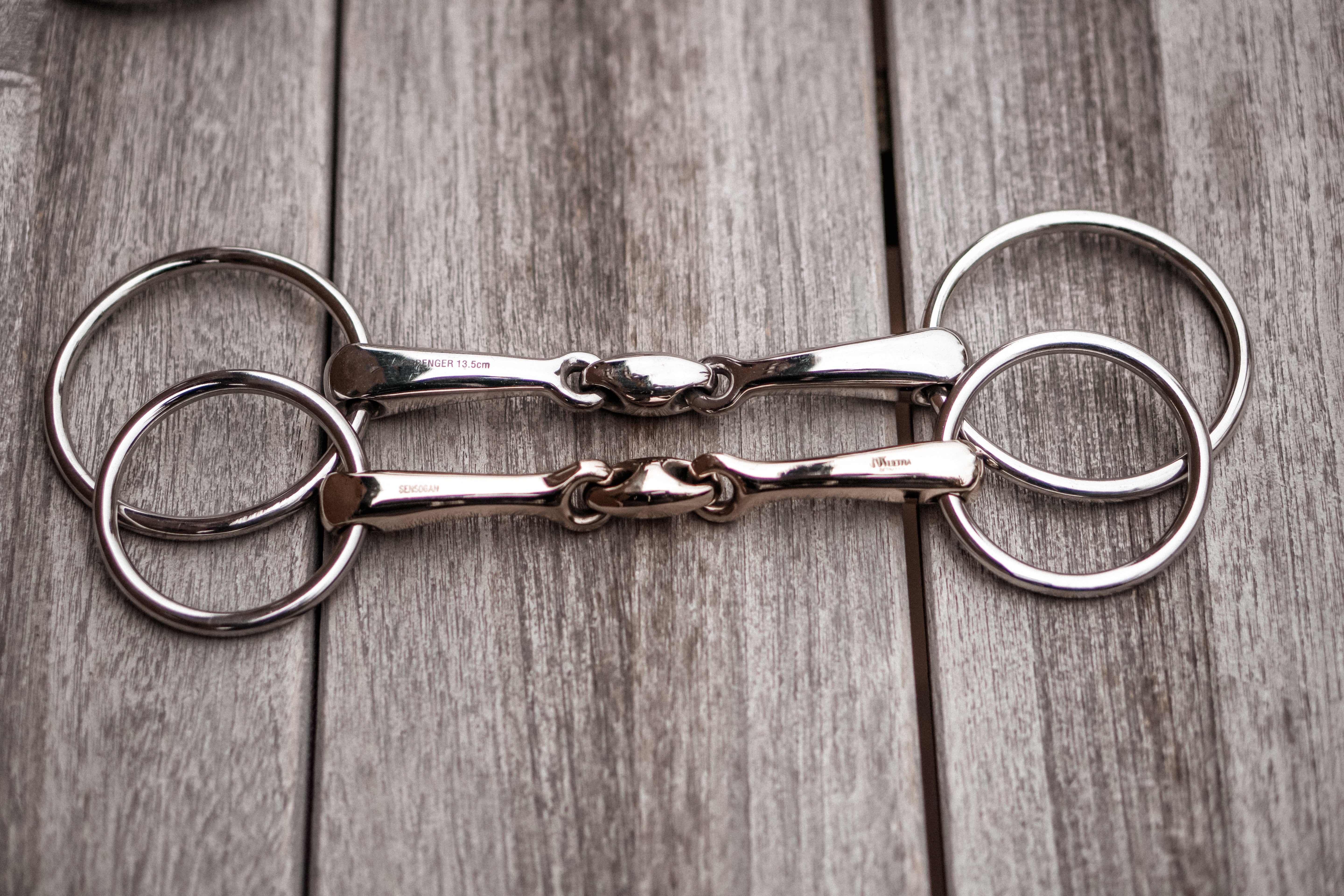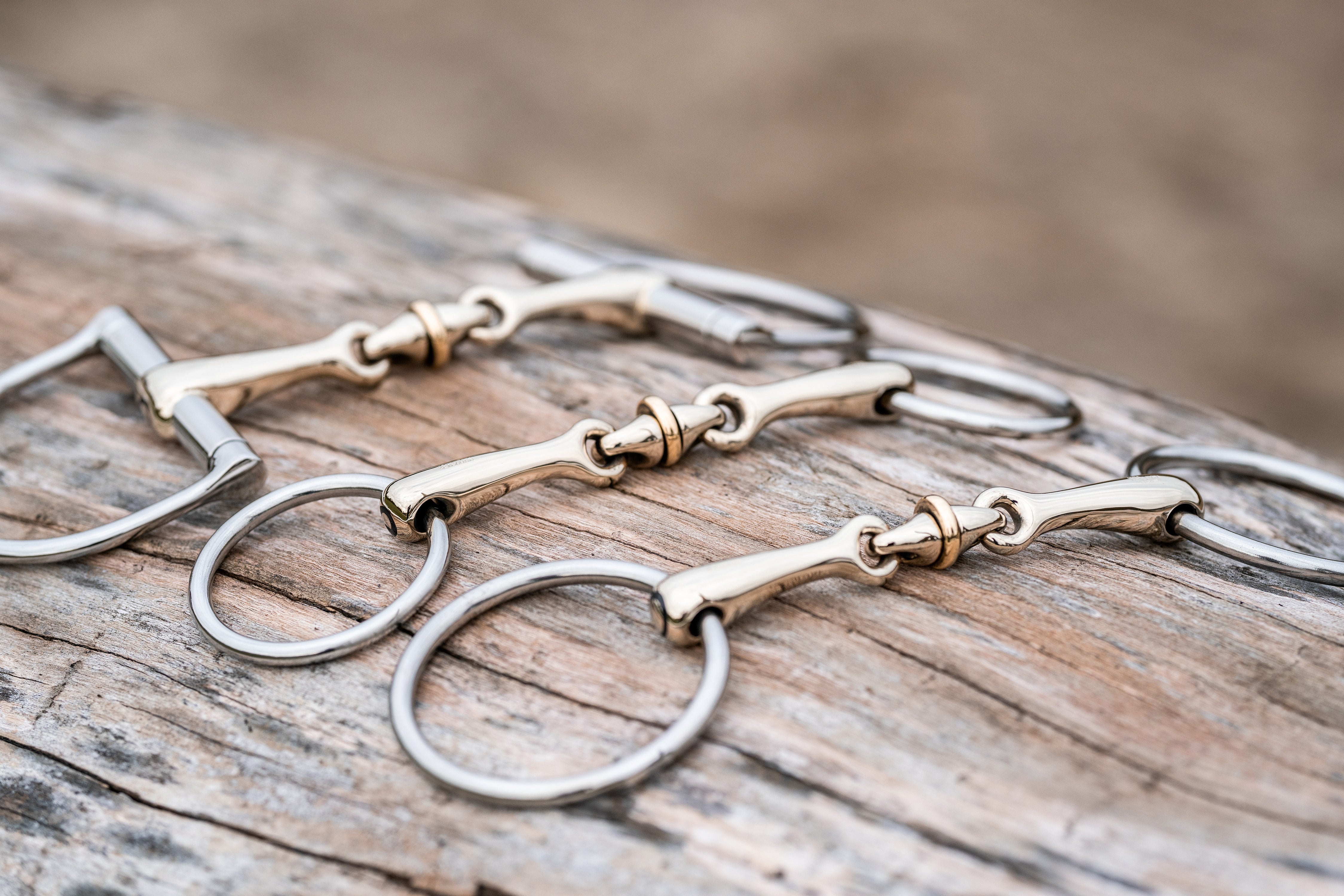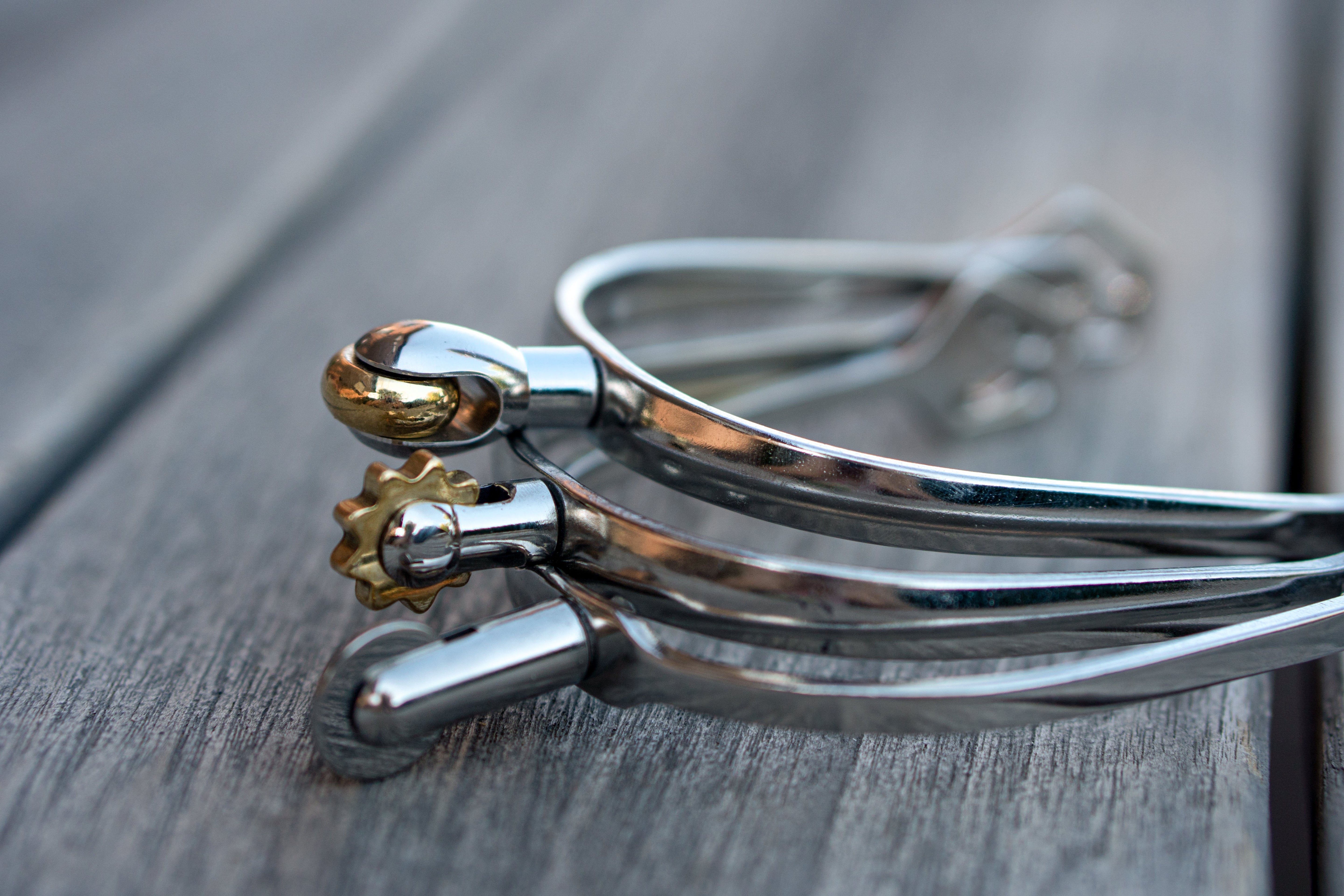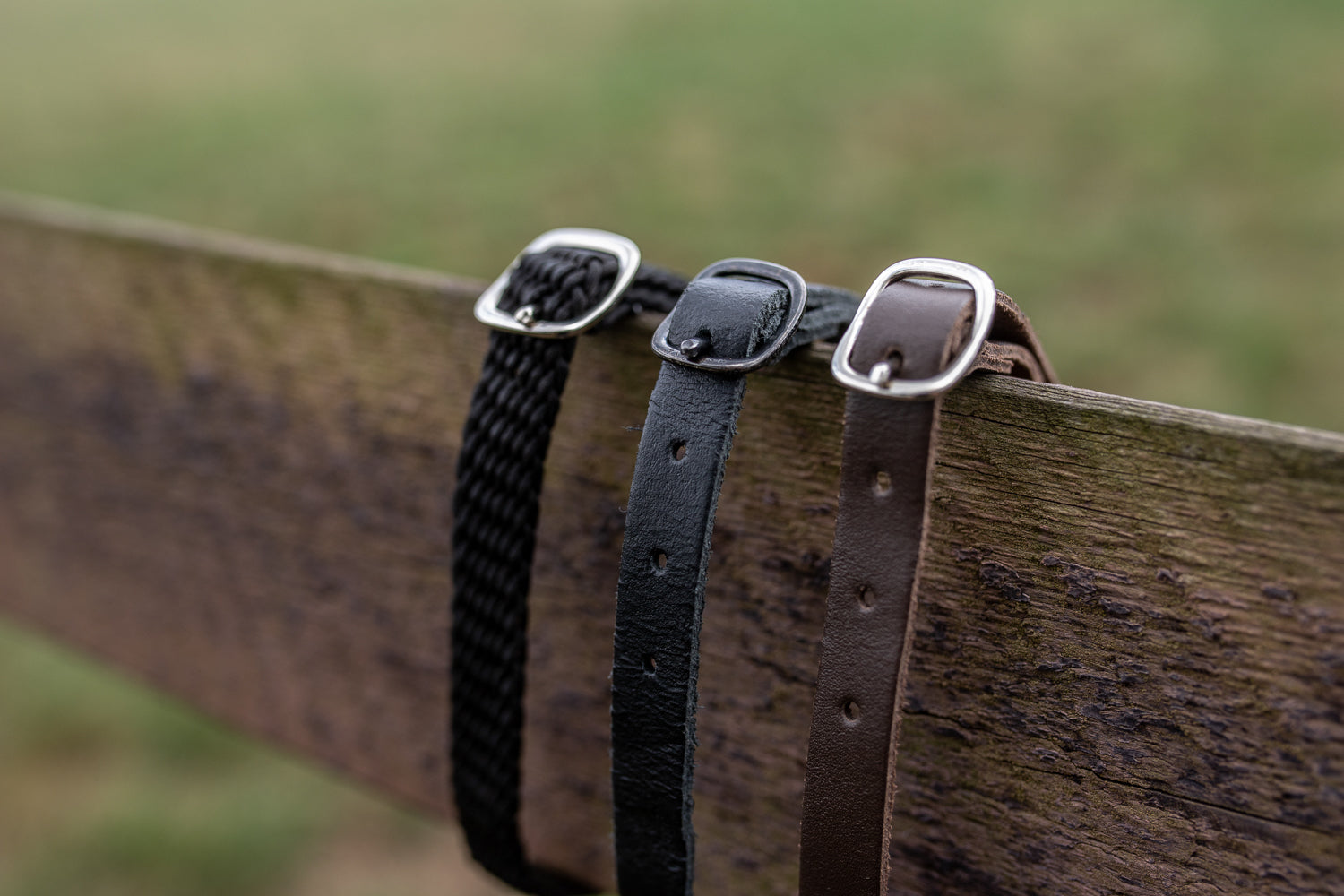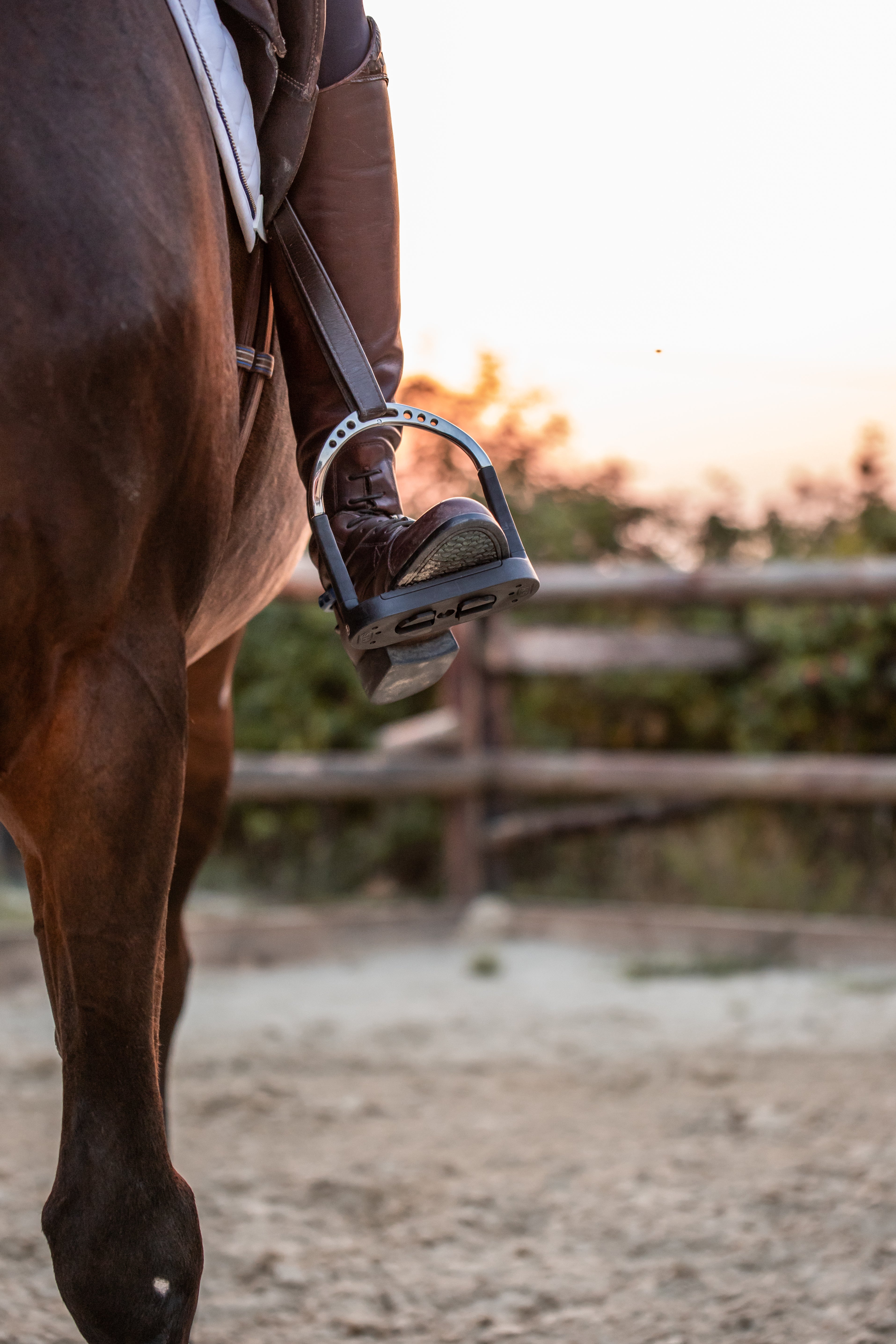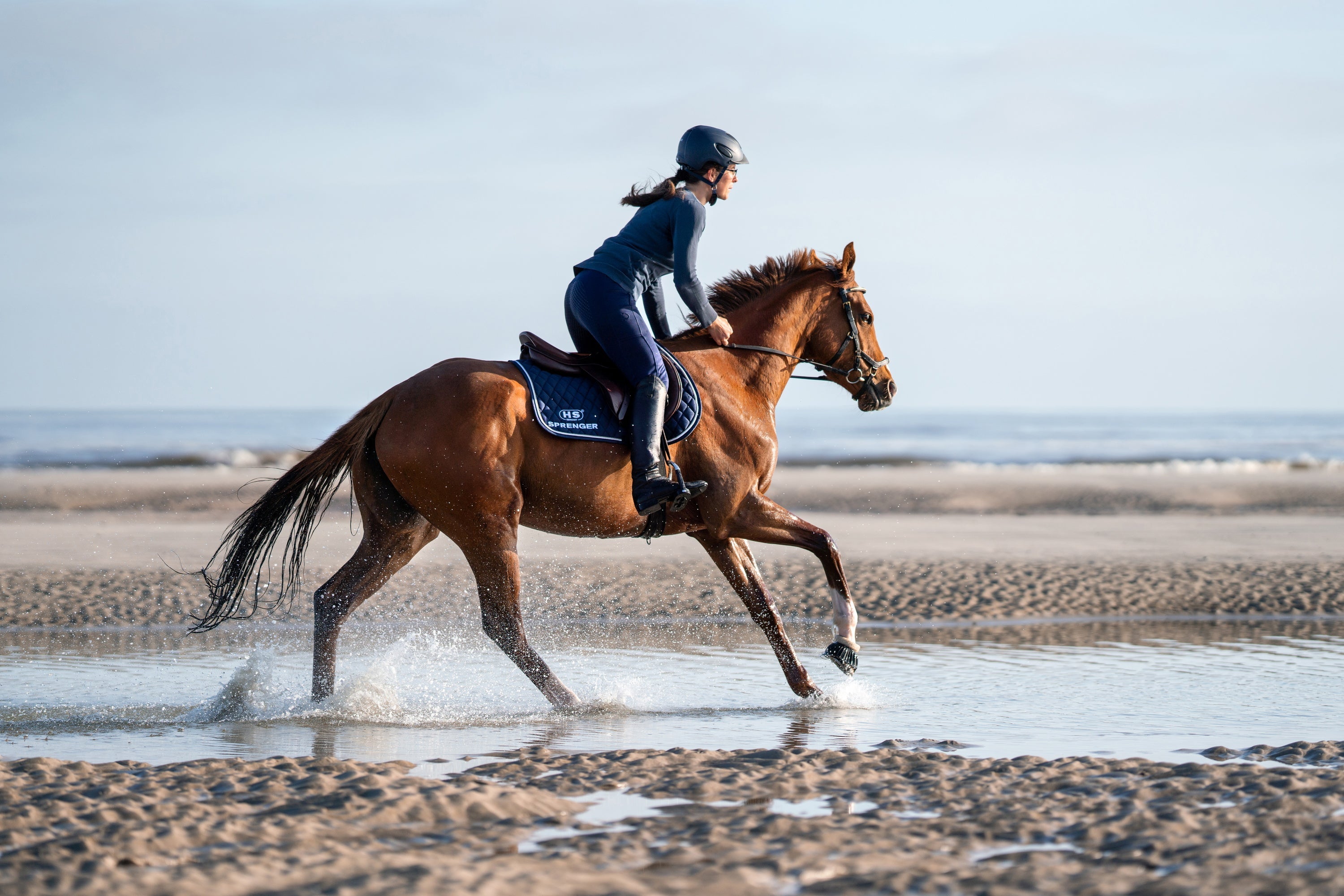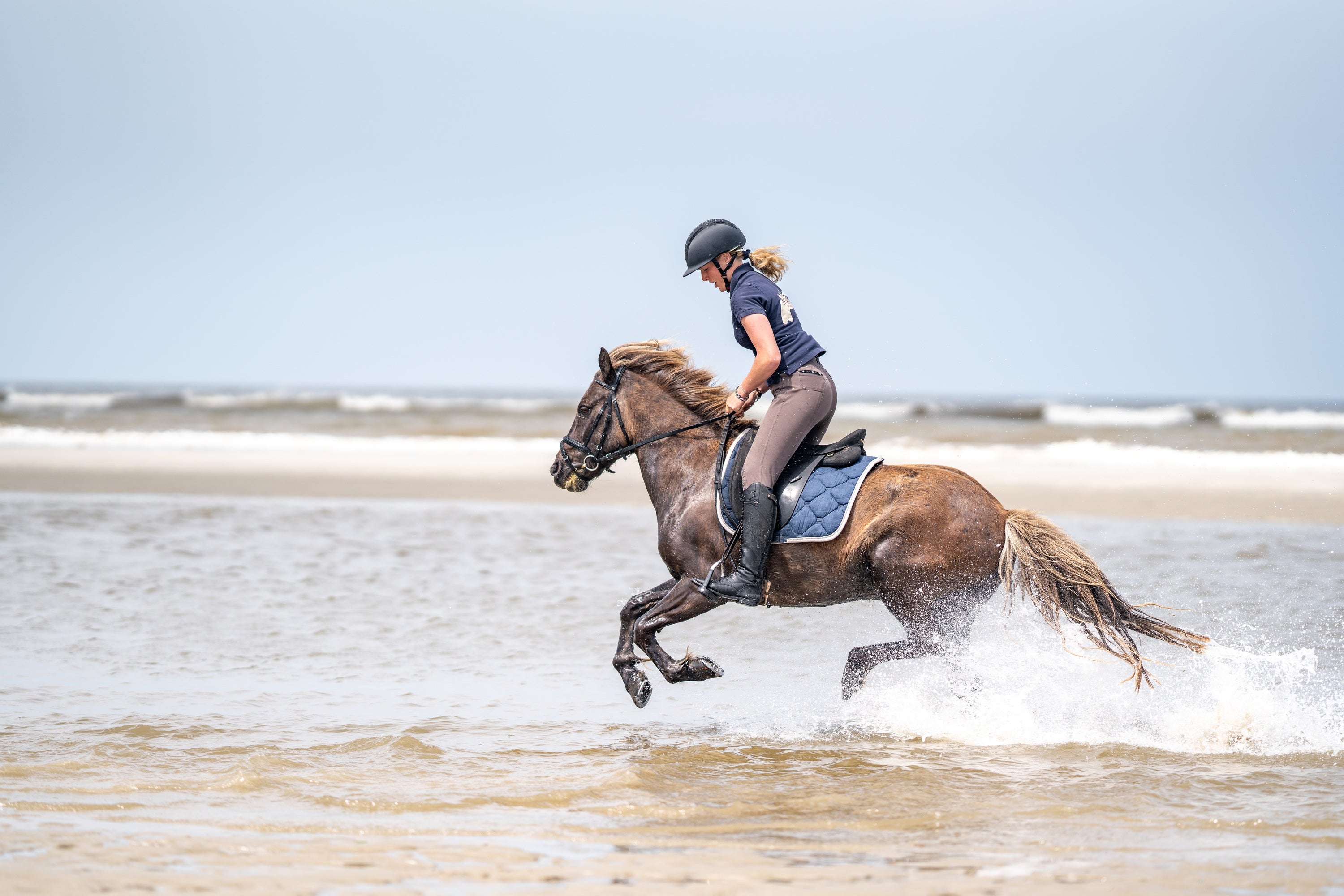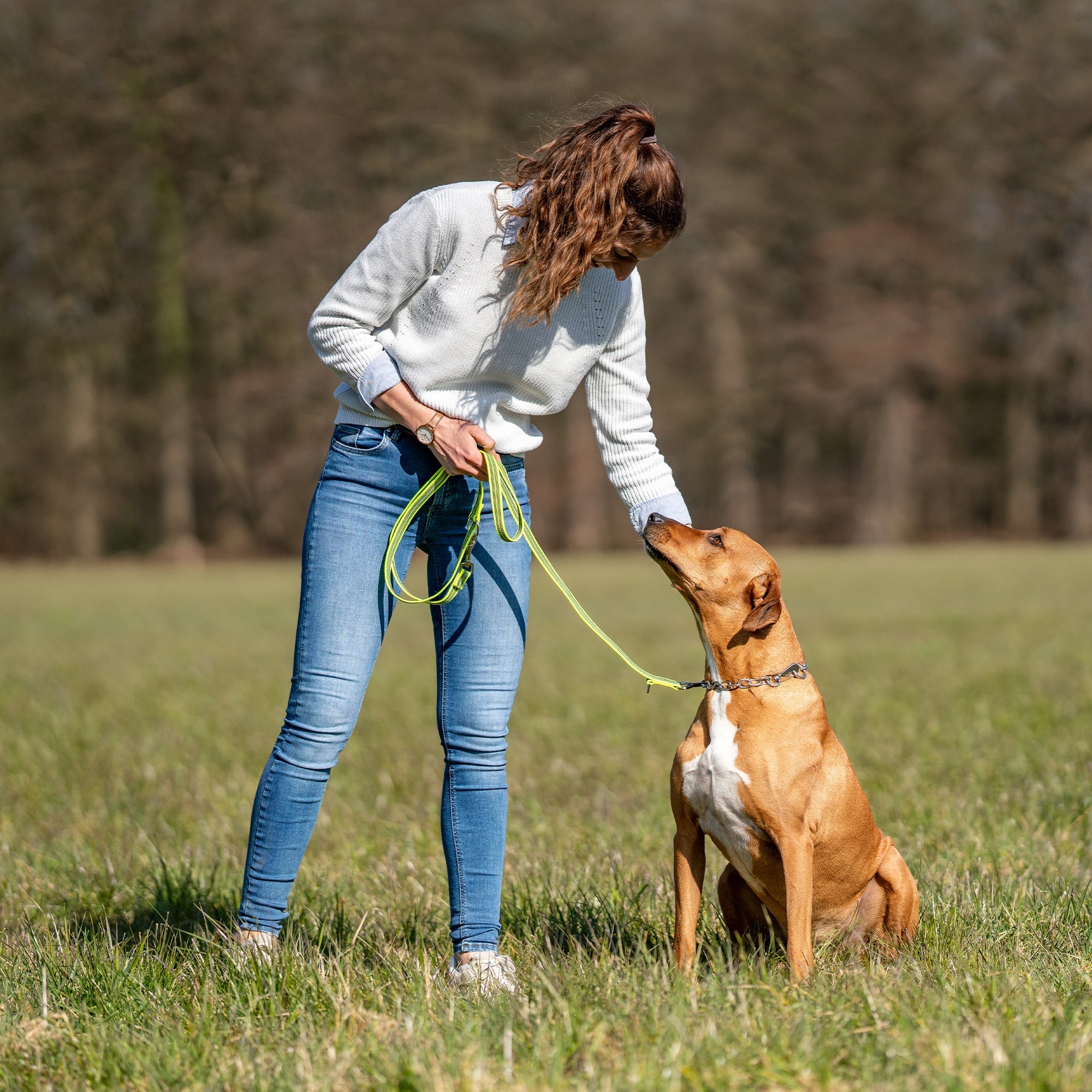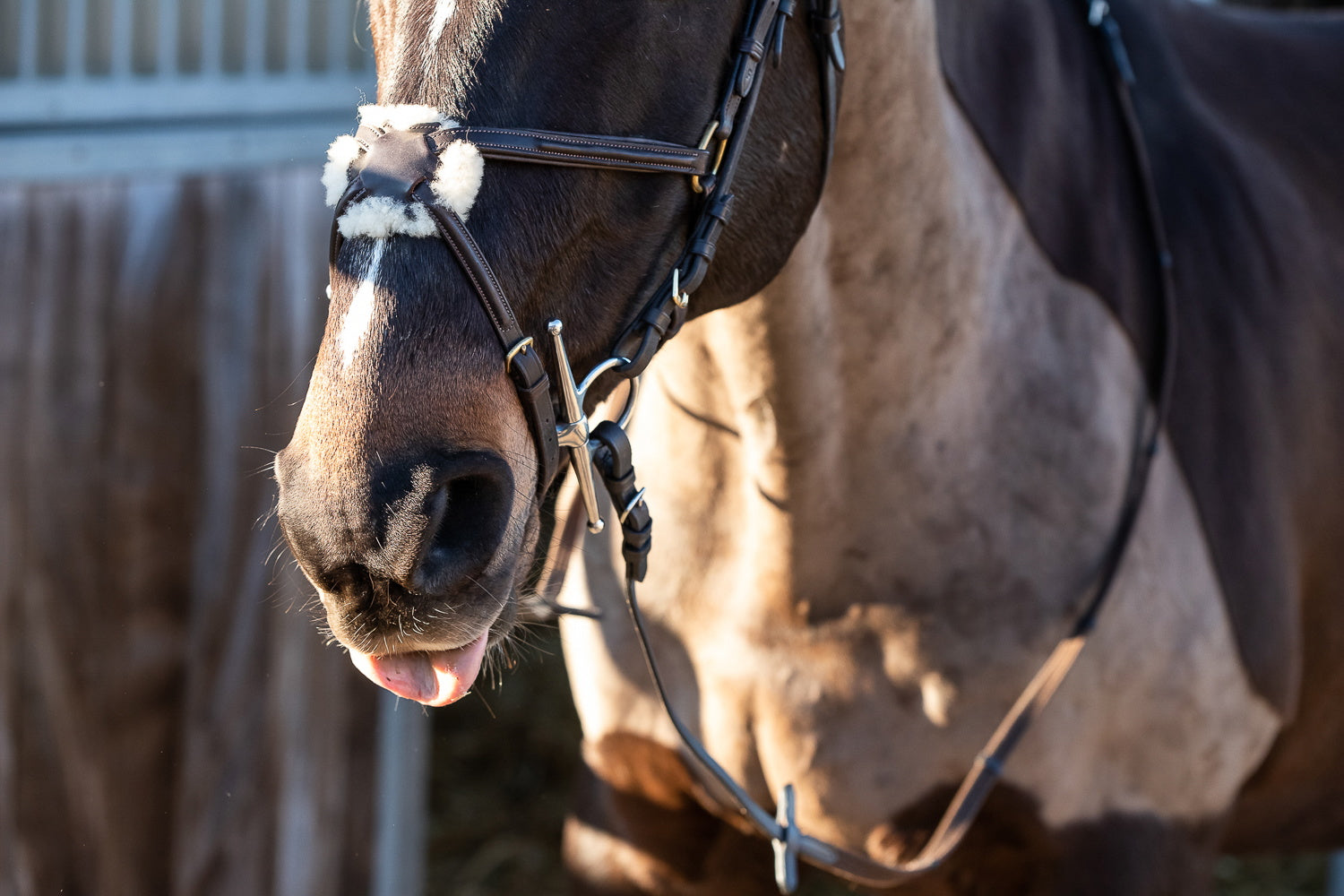
Which bit if the horse chews too much?
Many riders are familiar with the problem: the horse chews excessively on the bit while riding and downright rattles it. This behavior can disrupt communication between rider and horse and lead to misunderstandings. In general, the horse's chewing is positive and ensures a supple jaw musculature and topline, which is why we want to encourage this behavior.
Bit materials such as the copper alloy SENSOGAN have a positive effect on this behavior and stimulate the horse to chew through a specific influence on the flow of saliva. However, if your horse chews excessively, this leads to the aids not reaching the horse's mouth and the horse not concentrating. In this blog post, we take a look at possible causes and present some bits that can prove to be a good choice for this behavior. We focus in particular on the NATHE bits and the SPRENGER TURNADO stainless steel bits.
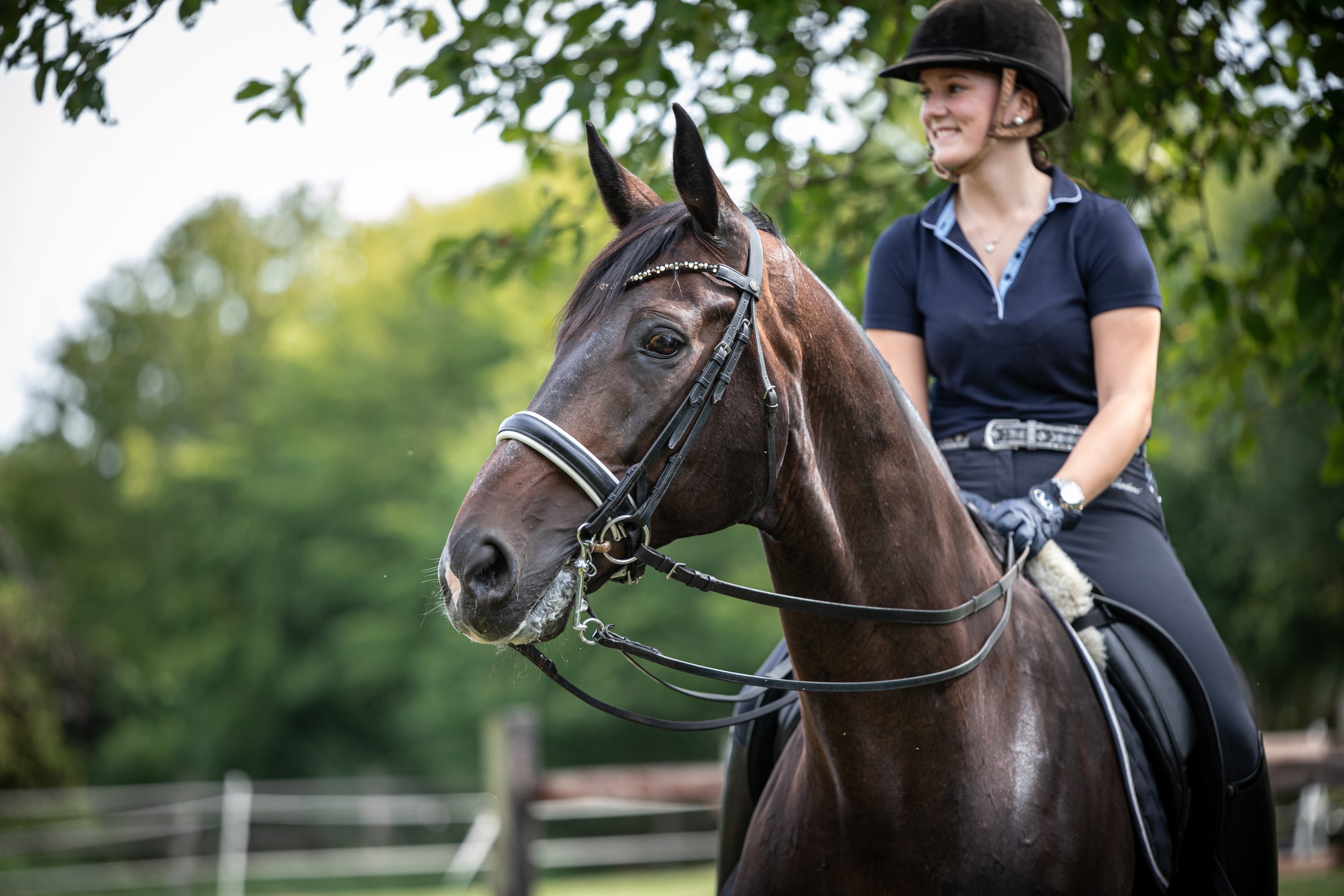
Causes of excessive chewing
Before we look at suitable bits, it is important to understand the possible causes of excessive chewing:
1. Bit that is too big or too small: a bit that is chosen too large, or is buckled too low, will 'clatter' in the horse's mouth, and can make your horse uncomfortable, which is why it starts to chew on it heavily. But even if the bit is too small or sits too high, your horse may try to escape the pressure by chewing excessively.
2. Unsuitable bit shape: The shape of the mouthpiece is uncomfortable for your horse and it tries to escape the pressure distribution in the mouth by chewing.
3. Insecure or nervous: Horses can start to chew excessively due to insecurity or nervousness. This can be triggered by stressful situations such as competitions or unfamiliar environments. This behavior should reduce as the horse begins to work and concentrate on lections.
4. Dental problems: Dental problems or discomfort in the mouth can cause the horse to chew more to keep the bit away from painful areas of the mouth. Present your horse regularly to a horse dentist for dental care.
5. Lack of concentration: Sometimes excessive chewing can also be a sign that the horse is bored. The horse's mental and physical activity plays a role here. When riding or lunging, challenge the horse with a varied training session.
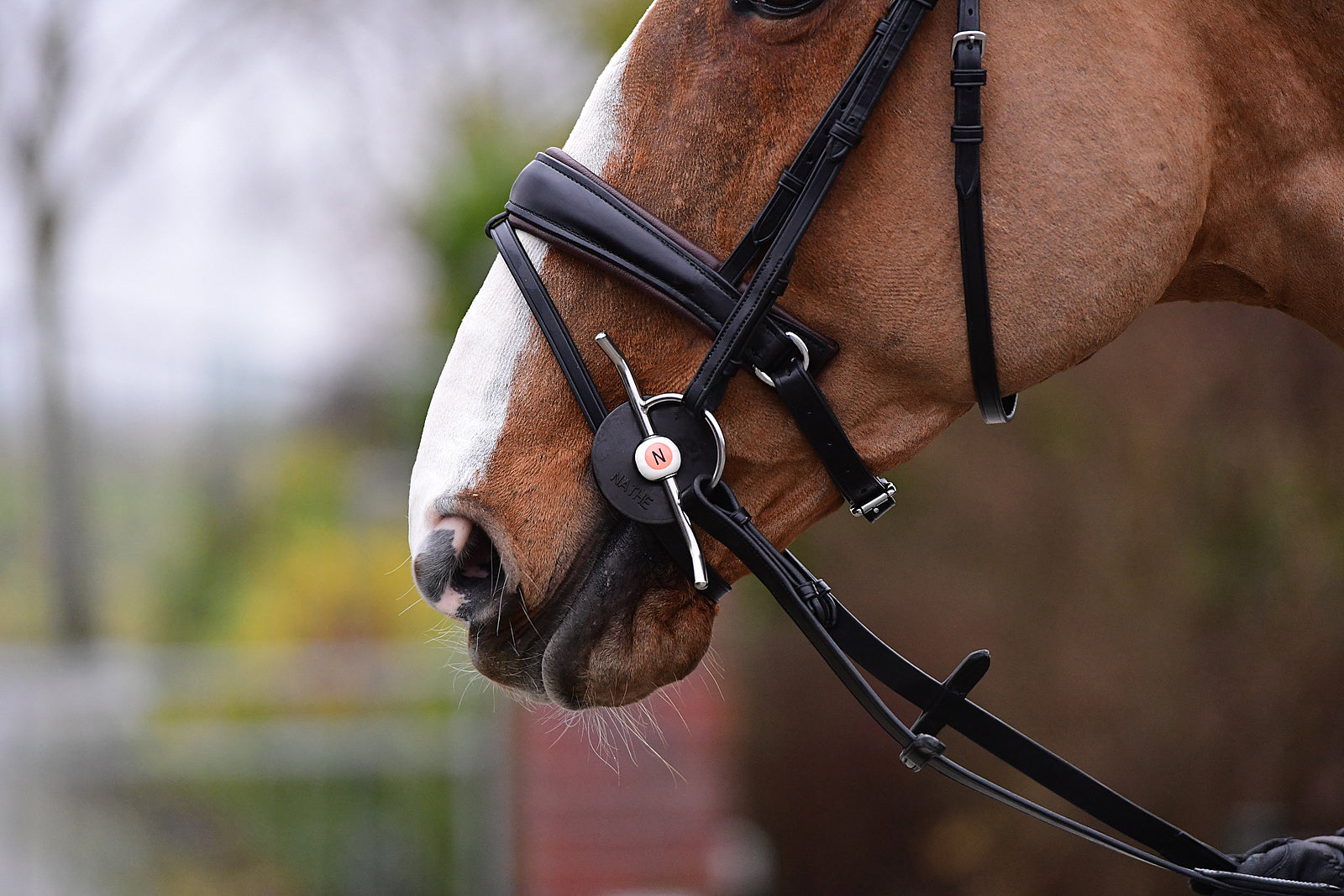
Choosing the right bit
To reduce excessive chewing, you should choose a bit that has no additional chewing-promoting features and lies as steady as possible in the horse's mouth. You should take the following factors into consideration:
1.
Bits made of stainless steel or special plastics tend to be less stimulating than bits from our SENSOGAN. Stainless steel or plastic bits are tasteless.
Recommendation: NATHE bits made of thermoplastic
The NATHE bits from SPRENGER are an excellent choice when it comes to minimizing excessive chewing. These bits are made of mouth-friendly thermoplastic. Unlike rubber bits, the smooth surface of the material does not lead to the well-known eraser-effect. Even sensitive horses accept the NATHE bits well. As a poor heat conductor, thermoplastic is also pleasant for your horse in the winter, as the bit does not get as cold in the tack room as a conventional stainless steel bit. You can read more about our NATHE bits in the article 'NATHE bits for sensitive horses'.
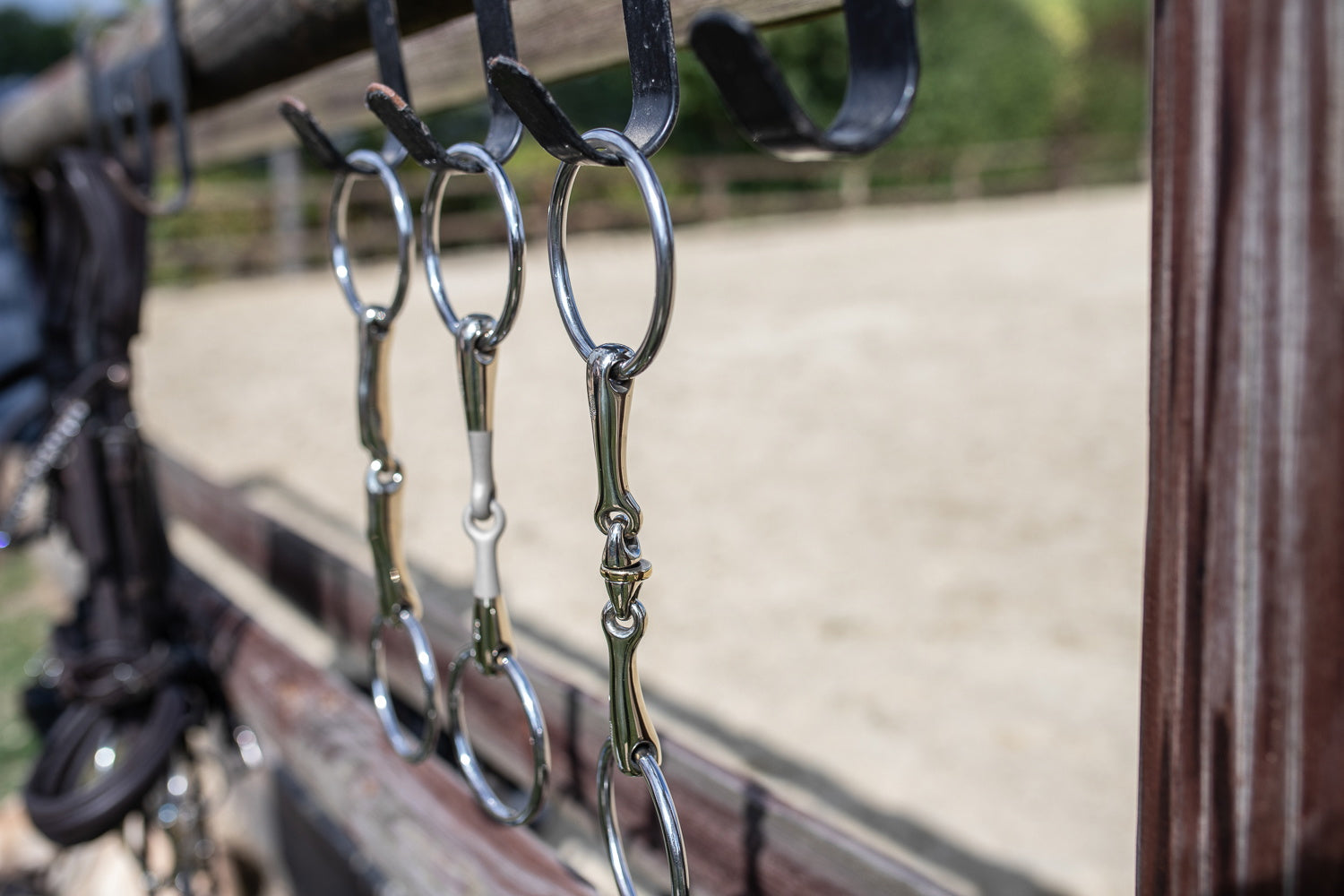
Alternative: SPRENGER TURNADO stainless steel bits
Alternatively, stainless steel bits do not have any features that promote chewing. However, if you still want to offer your horse the comfort of a bit that is adapted to the anatomy of the horse's mouth, the SPRENGER TURNADO bits are the perfect choice. The innovative joint of these single jointed bits is inclined forwards by 45° to equalize the contact surface of the two bit shanks. This is the significant difference between the TURNADO bits and conventional single jointed models. This special feature is characterized by the sandblasting in the middle. The even contact surface helps to work against the horse's natural crookedness.
Bye-bye nutcracker effect! You've probably heard of the nutcracker effect in connection with single jointed bits. This describes the lifting of the joint, which then presses into the horse's palate, while at the same time pressure is exerted on the lower bars by the bit shanks. This effect is avoided by rotating the joint on our TURNADO bits!
Would you like to find out more about the TURNADO bits from SPRENGER? Then read the article: 'No more nutcracker effect | TURNADO bits'.
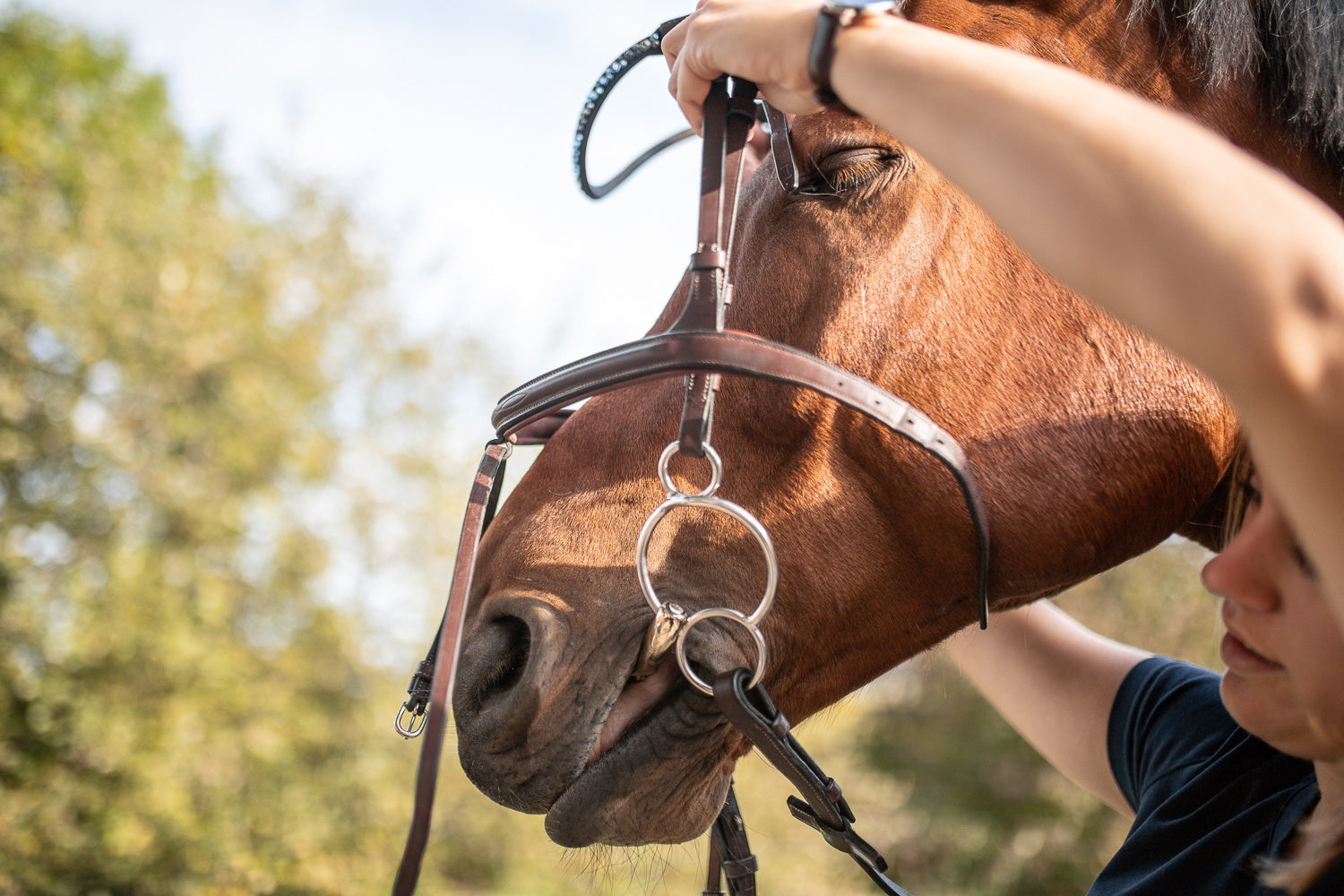
2.
Once you have found the right bit in the right size, it is important to buckle it in the right position in the mouth. A bit that is buckled too high can apply pressure to the corners of the mouth and cause the horse to chew more, while a bit that hangs too low can be restless in the mouth and also encourage the horse to play with the bit. The bit should lie steady in the mouth, the headpiece should be able to be easily slipped over the ears (if this is not possible, the bit sits too high) and the cheekpieces must not flicker when the reins are picked up (otherwise the bit sits too low).
People often say that two folds form at the corner of the mouth when the bit is correctly fitted. To check whether this is the case, it is worth taking a look in the horse's mouth: is there enough space to the molars?
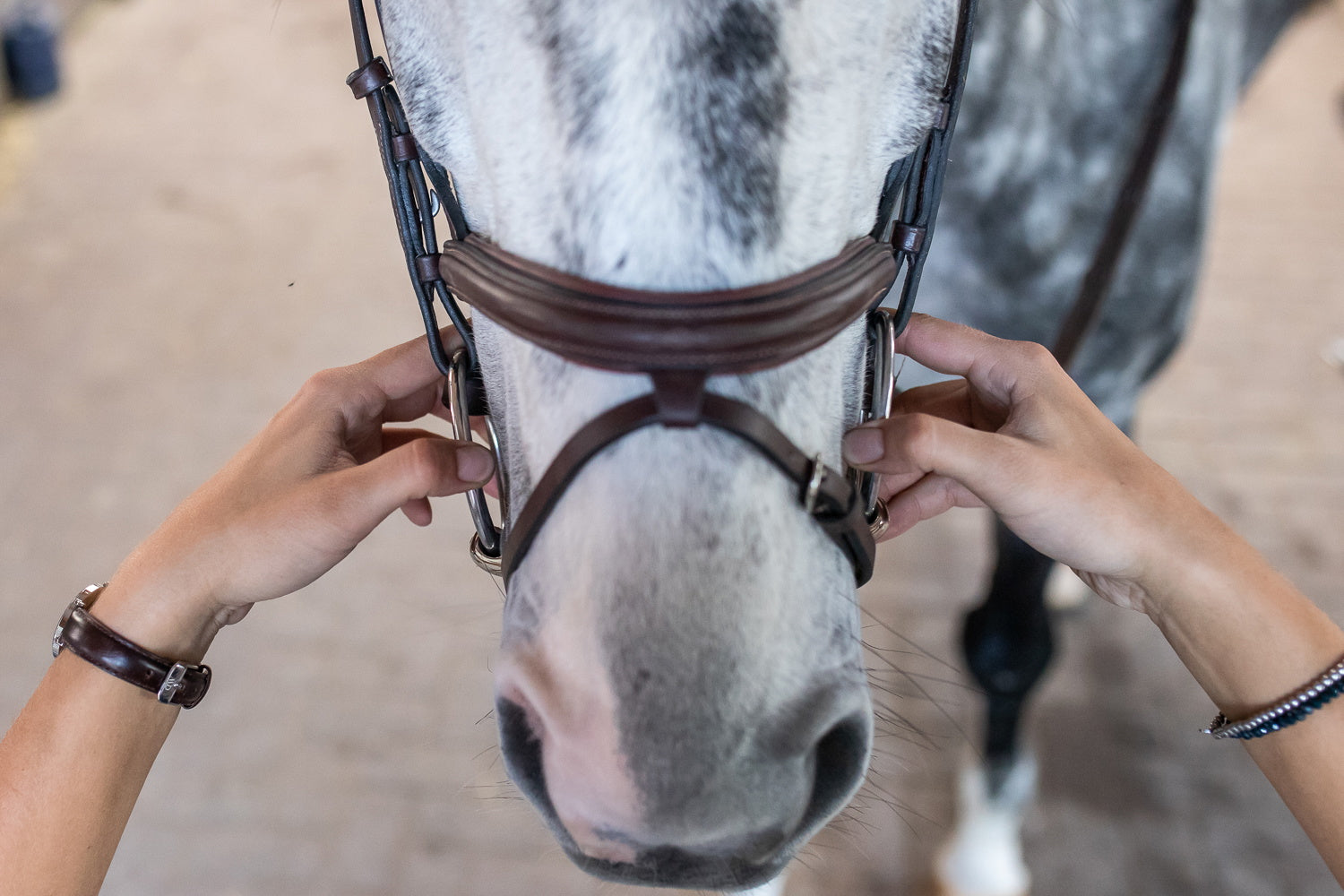
The right bit size
Not sure which is the right bit size for your horse?
In the article 'How to find the right bit', we explain what you need to look out for.
Bear in mind that the sizes are chosen differently for snaffles and bits with fixed side pieces.
With snaffles, the loose ring should slide through the holes in the mouthpiece and there should be a maximum of 3 - 5 mm space between the bit ring and the corner of the mouth to avoid pinching the sensitive flews.
With eggbut bits or cheek snaffles, you usually choose one size smaller, because the side parts should be flush with the corner of the mouth and have a laterally limiting effect when riding turns.
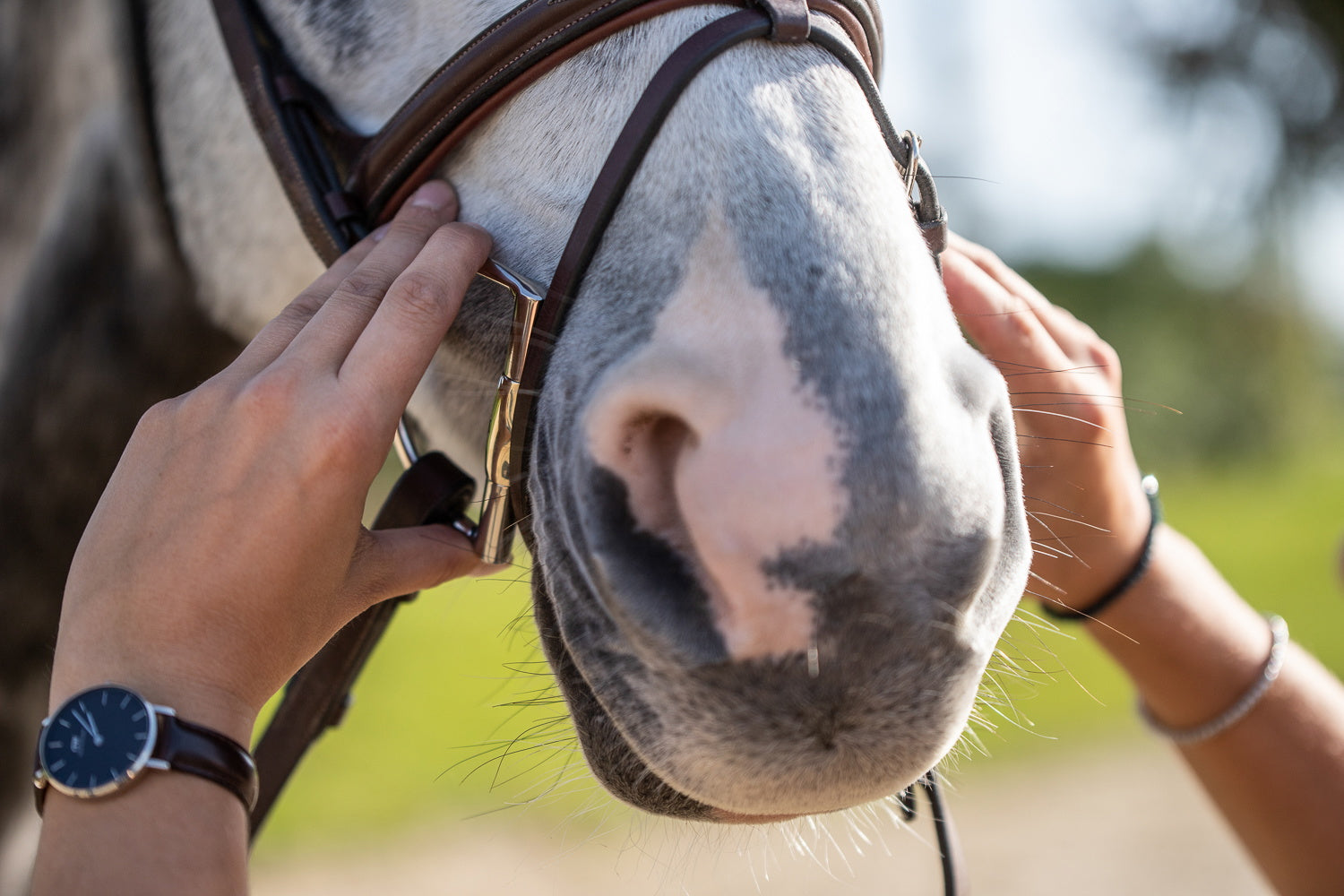
3. bits with fixed side pieces for a calmer position
Bits with side pieces such as olive head bits, D-ring bits or shank snaffles offer a more stable and relaxed position in the horse's mouth. These side pieces prevent the bit from slipping to the left and right and the rein aids reach the horse's mouth more directly. The more stable position of the bit can have a positive effect on excessive chewing.
Eggbut bit and D-ring bit:
- Eggbut bits: These bits have fixed side pieces, with a particularly soft transition between the mouthpiece and side piece. This means that the bit is particularly gentle on the corner of the mouth and lies smoothly in the mouth. Eggbut bits also have a lateral limiting effect and provide support when riding turns.
- D-ring bits: The D-shaped rings of the D-ring snaffle provide an even clearer lateral limit in contrast to eggbut bits. They also lie steadier in the mouth and offer a gentle but more direct effect in contrast to loose ring snaffles.
- Full cheek snaffle: If you need even more support when riding turns, a full cheek snaffle is a popular choice. The significantly longer shanks on the sides provide a clear boundary and lie against the corner of the mouth.
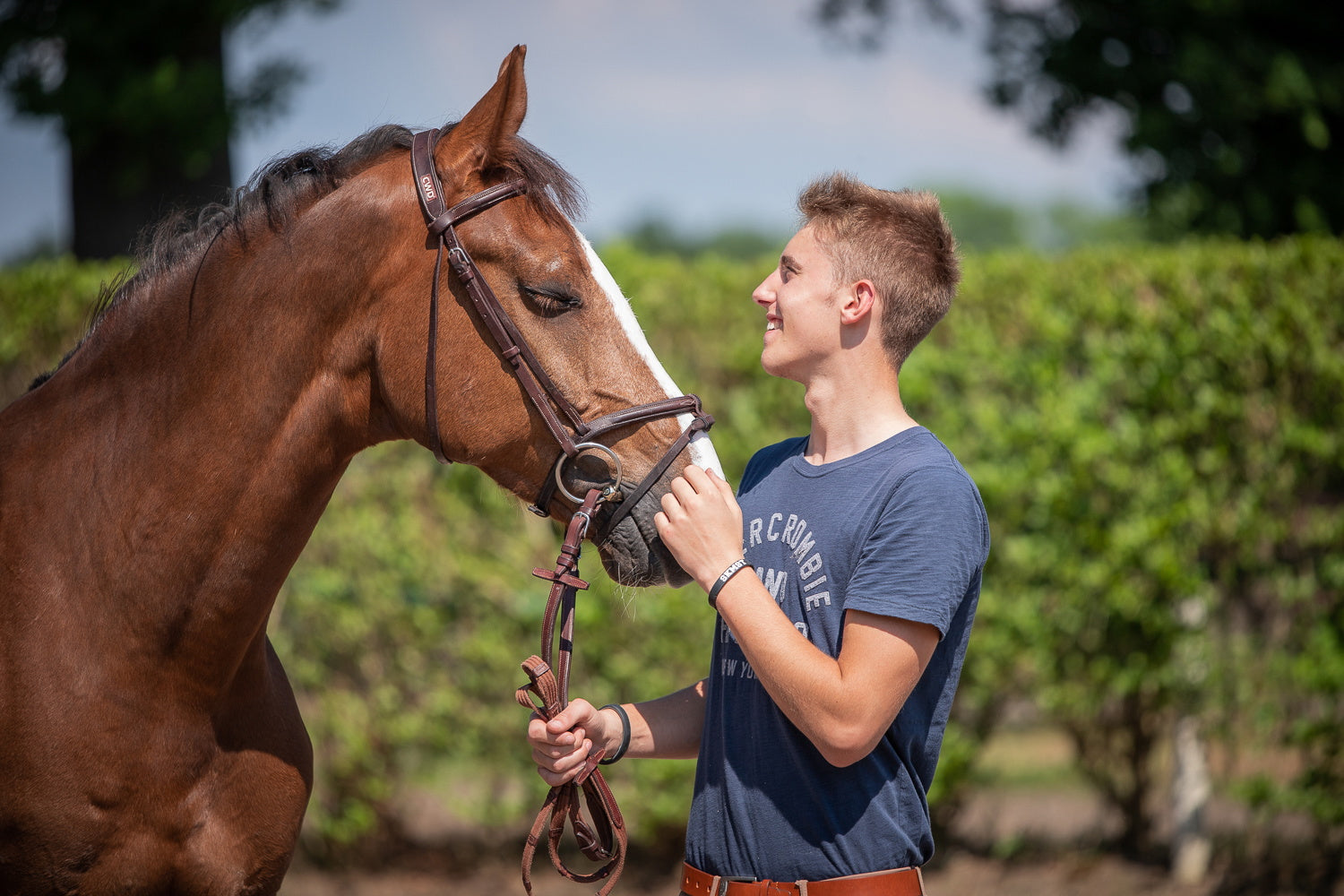
NATHE eggbut bit:
The NATHE eggbut bit from Sprenger is an excellent choice when it comes to a stable and calm position in the mouth. The side pieces keep the bit firmly in place and the smooth surface of the thermoplastic is pleasant to the horse's touch. This bit is particularly suitable for sensitive horses that react sensitively to movements in the mouth and therefore chew too much.
TURNADO full cheek snaffle:
The TURNADO full cheek snaffle offers a very clear lateral limitation and has a supportive effect, especially on horses that tend to break out over the shoulder. The innovative rotation of the joint ensures an even contact surface and therefore an effect on the tongue. The solid side parts also ensure that the bit remains in a stable position in the horse's mouth.
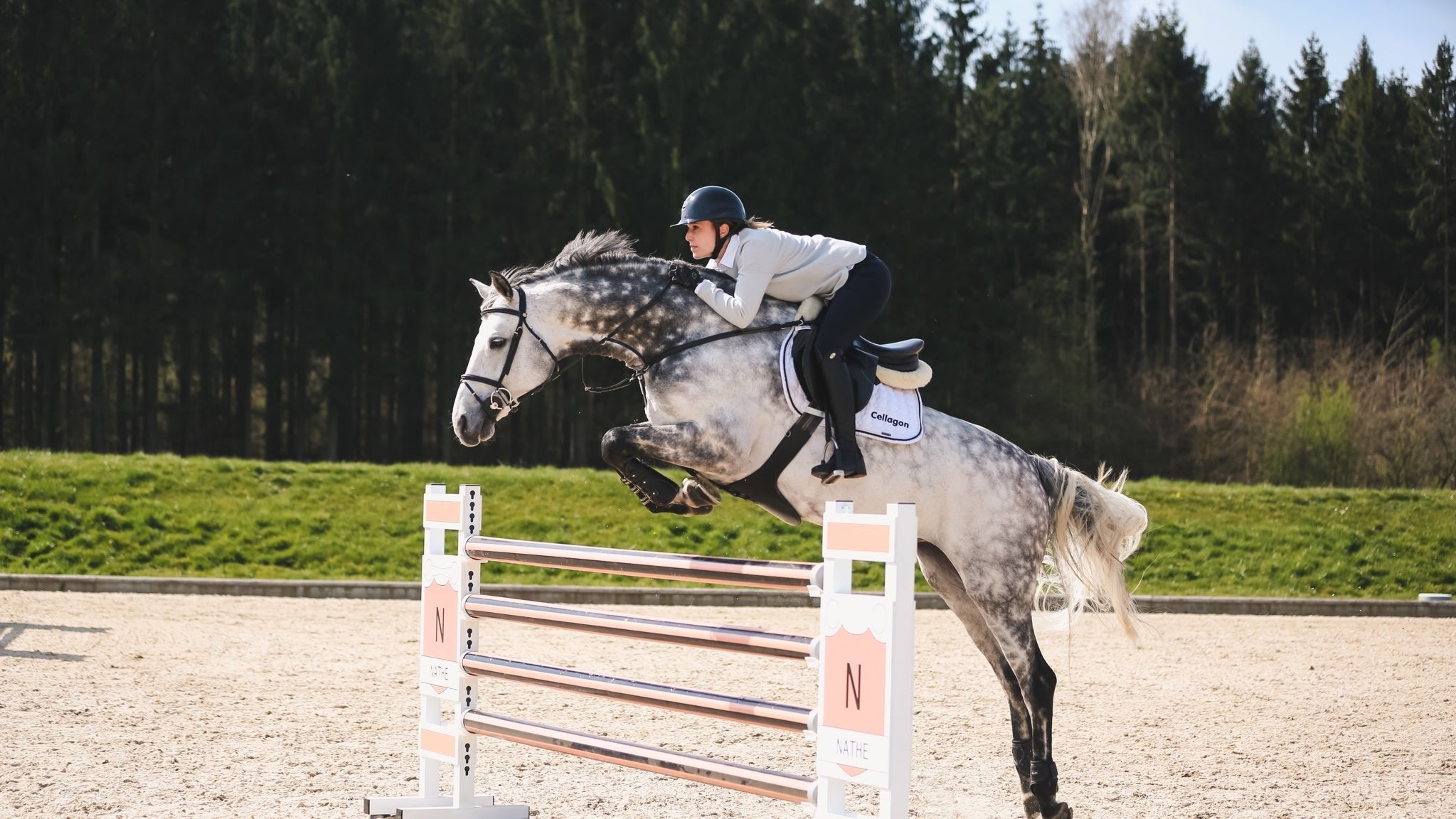
Further tips for reducing chewing
In addition to choosing the right bit, there are other measures that can help to reduce excessive chewing:
- Regular dental care: regular visits to the dentist are essential. Sharp edges and hooks on the teeth can be unpleasant for your horse, and not just when riding. Most vets recommend at least annual check-ups for adult animals.
- Variety in training: Boredom can also lead to excessive chewing. Offer your four-legged friend a varied program that challenges it both physically and mentally. Dressage work, lunging, cavaletti and hacks should be incorporated regularly


